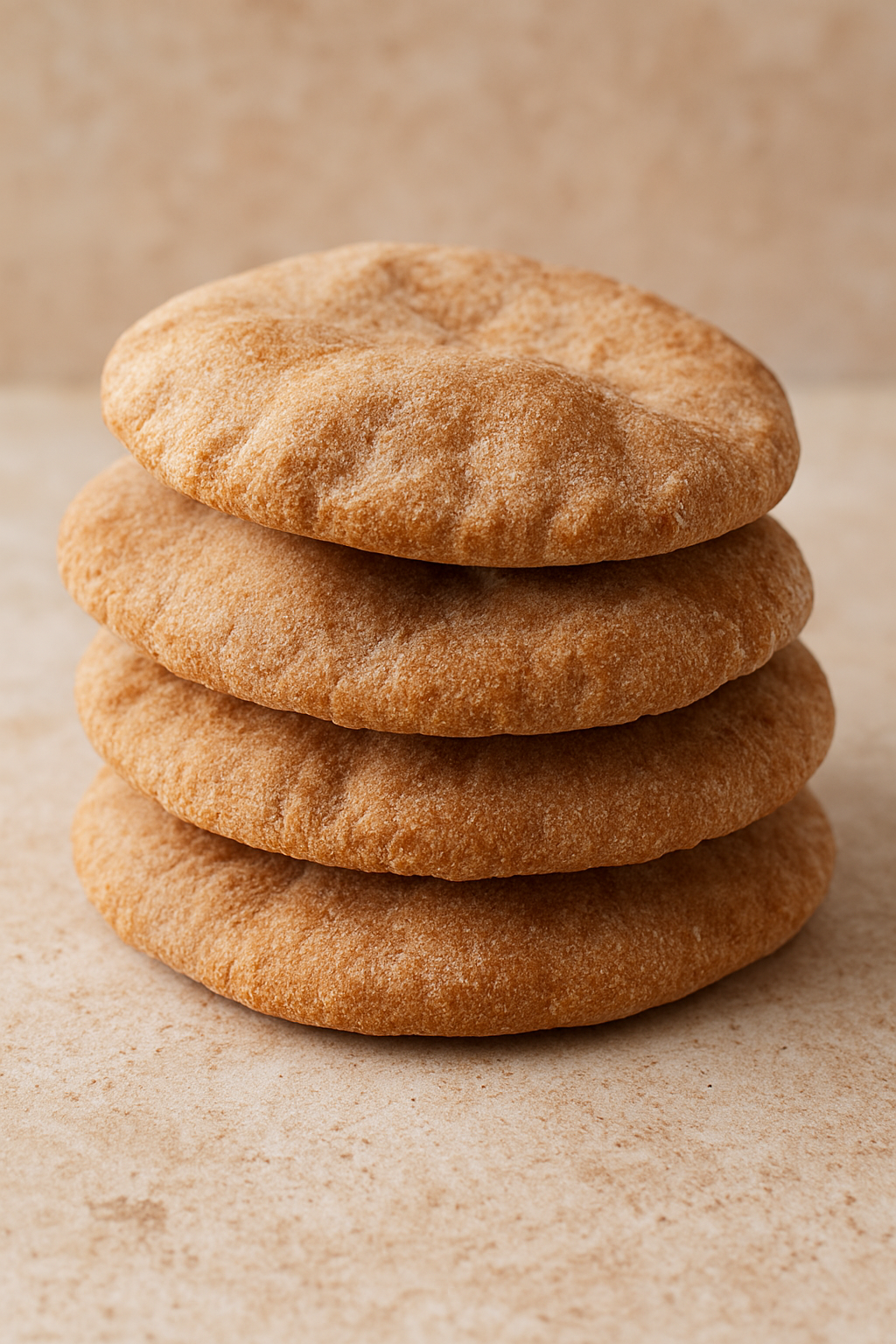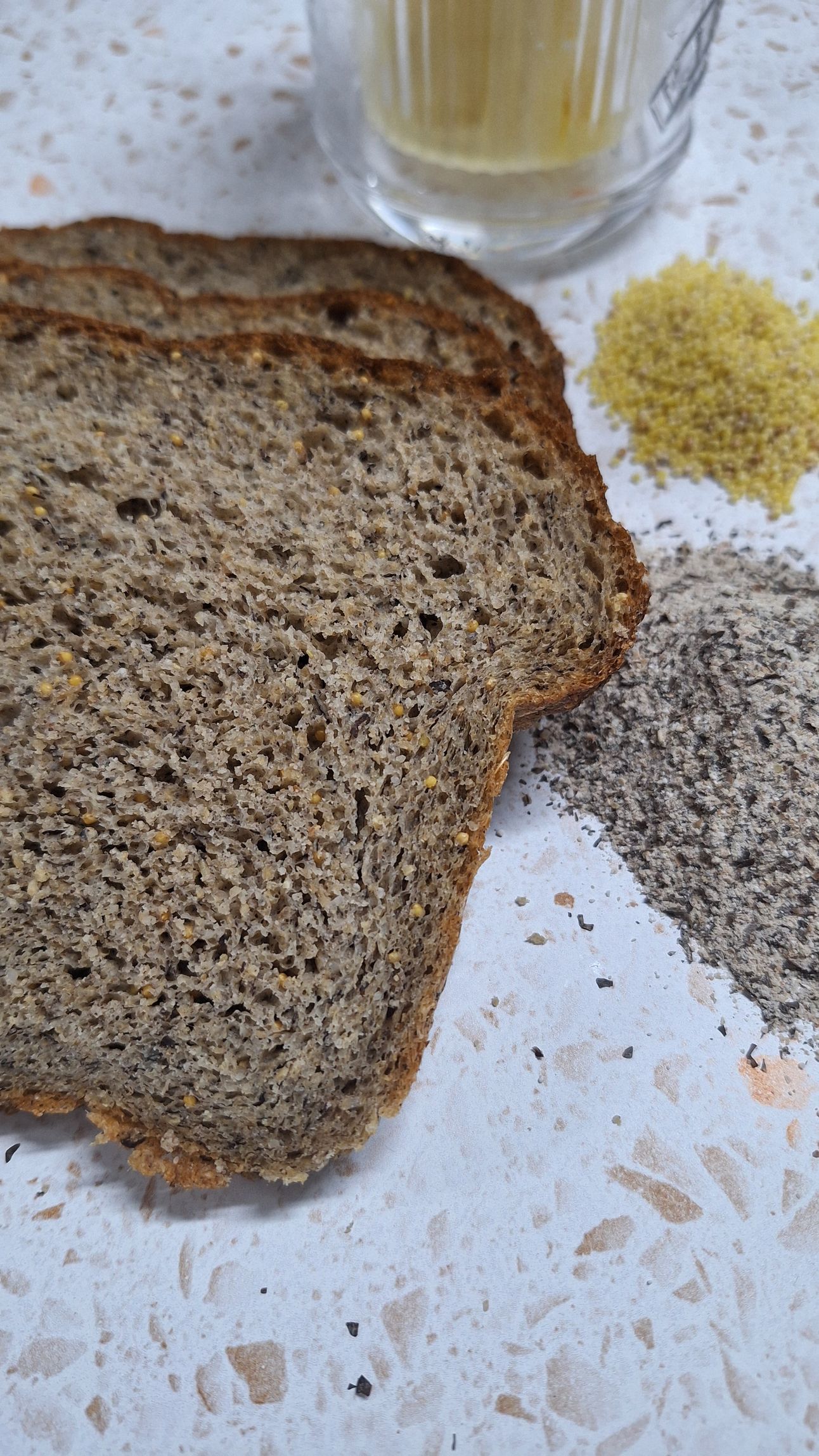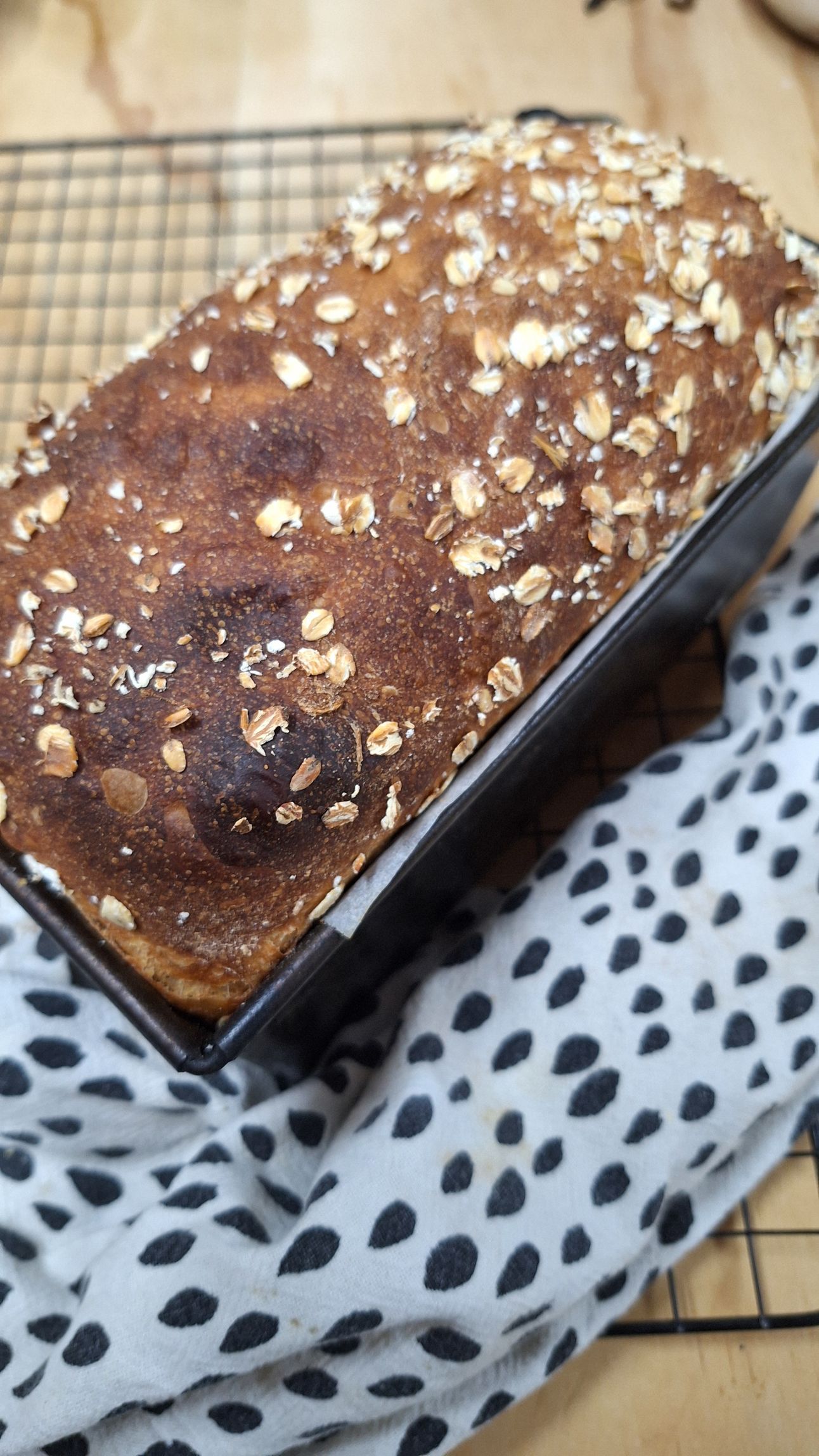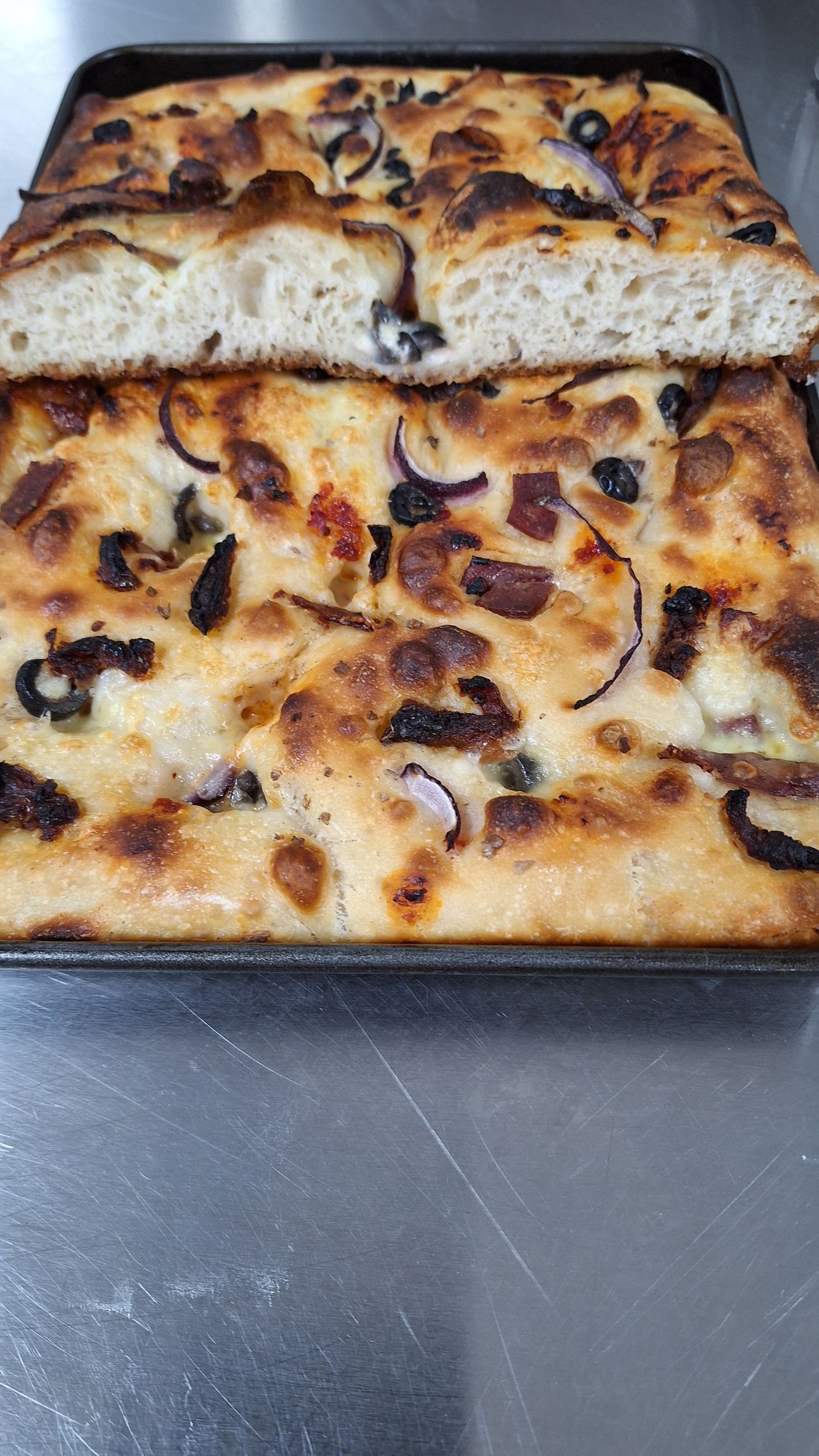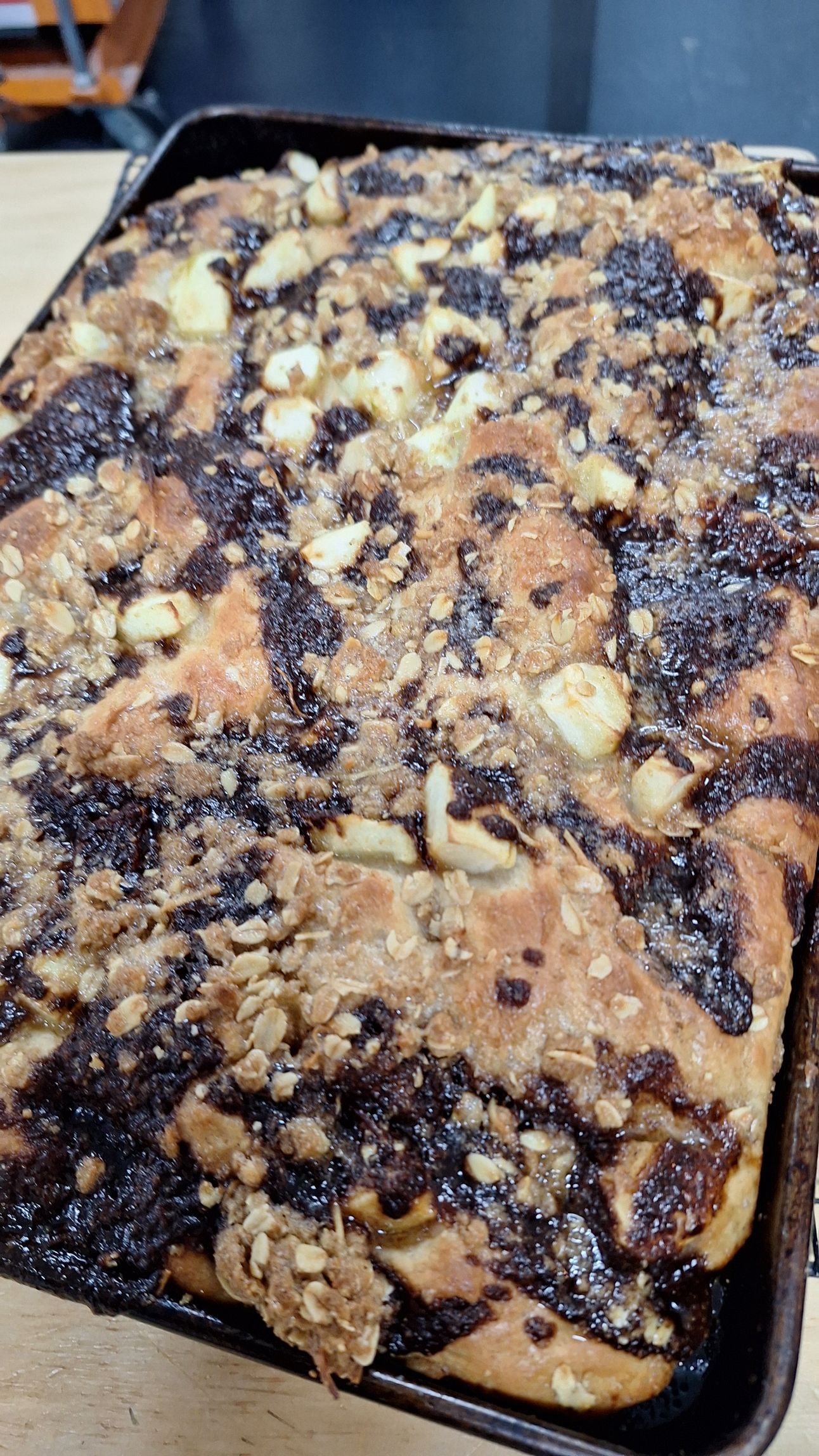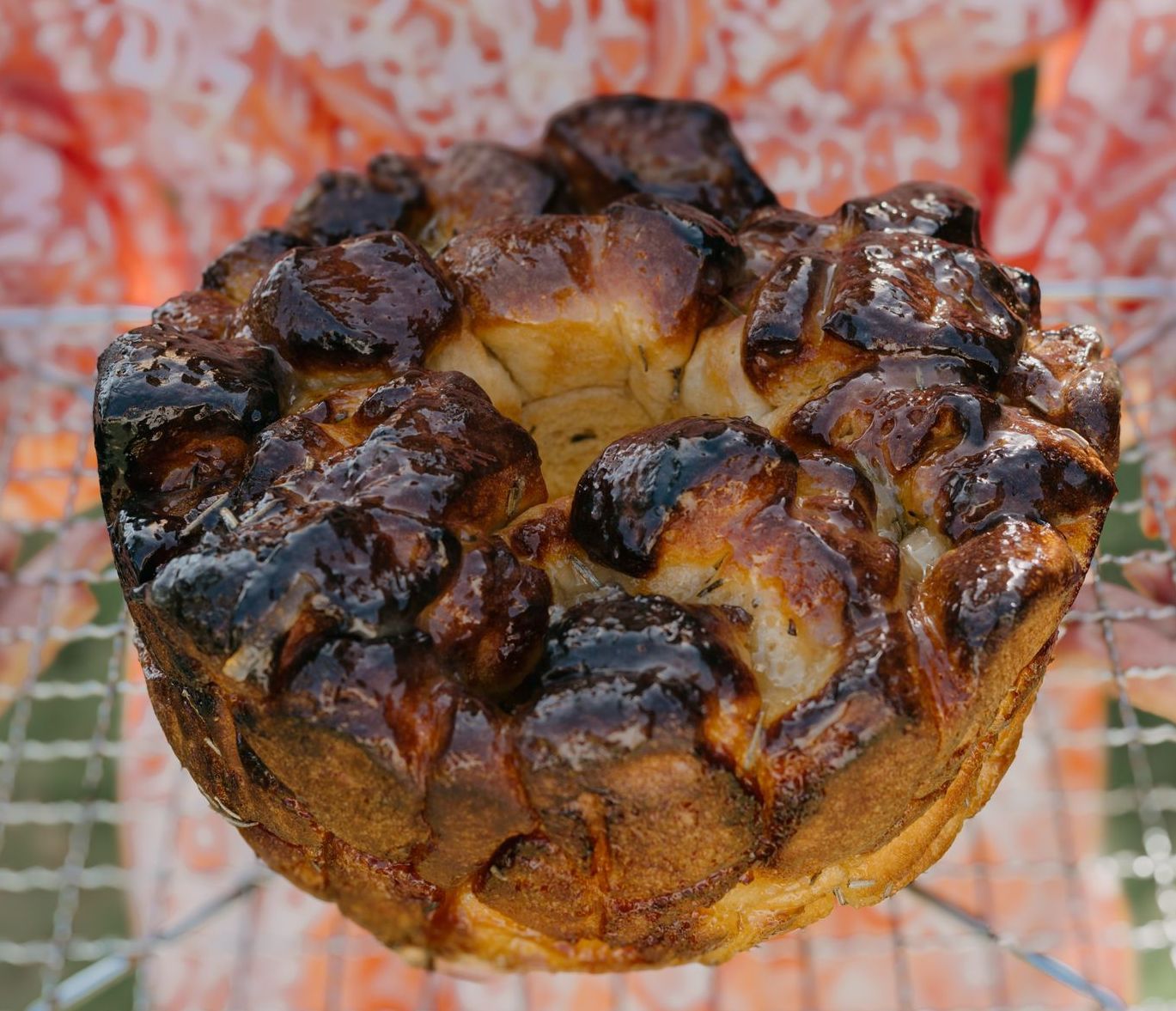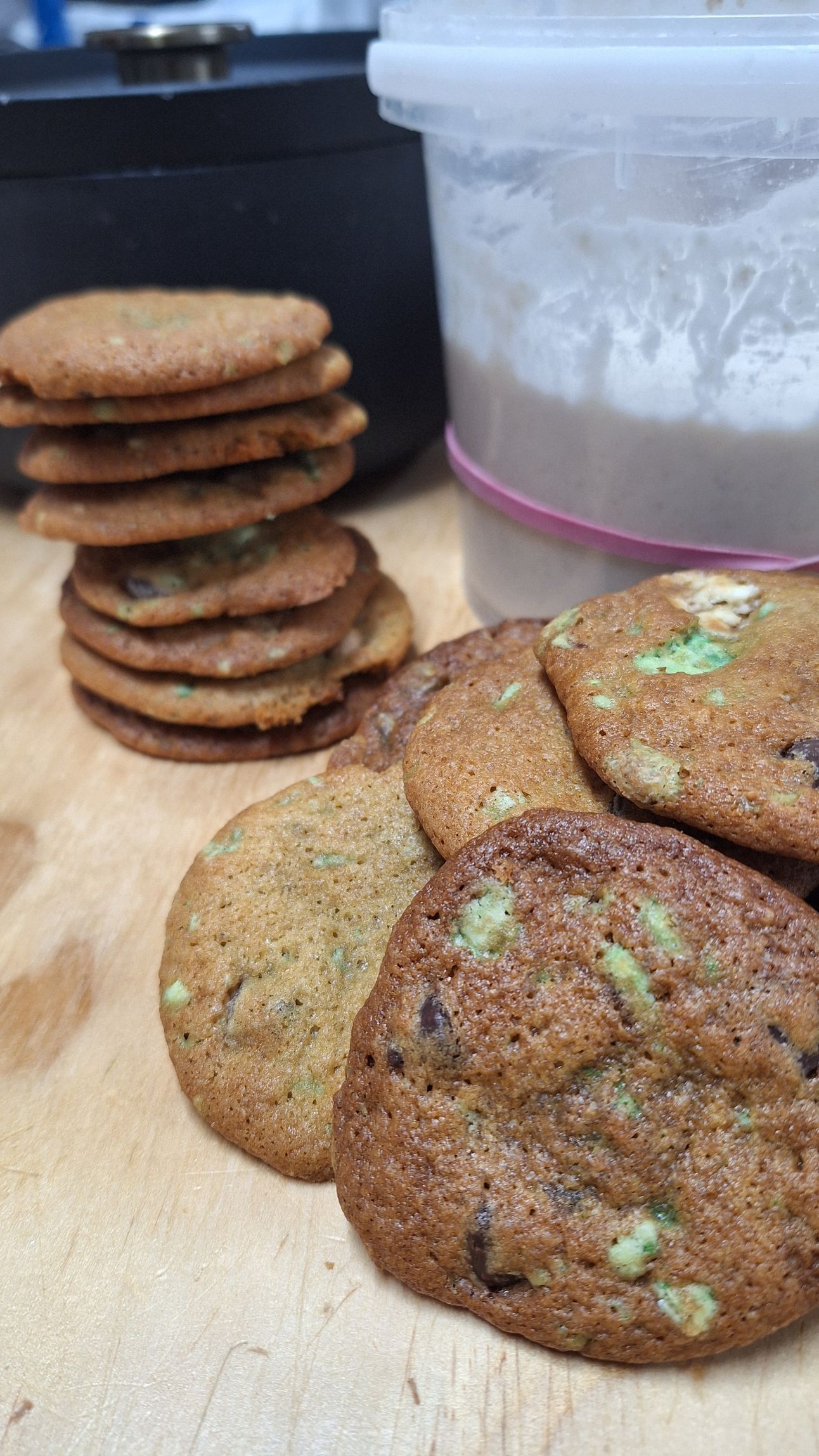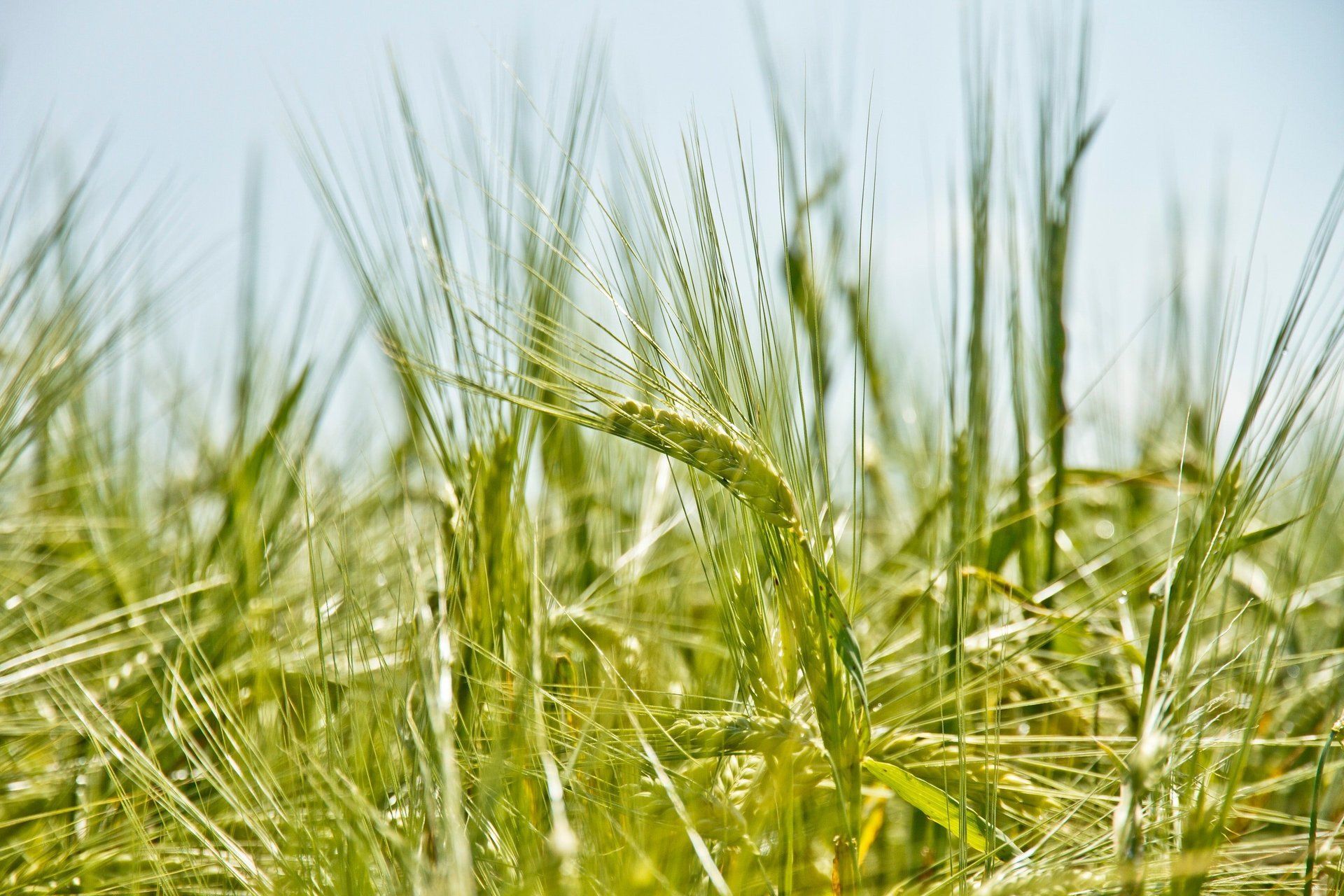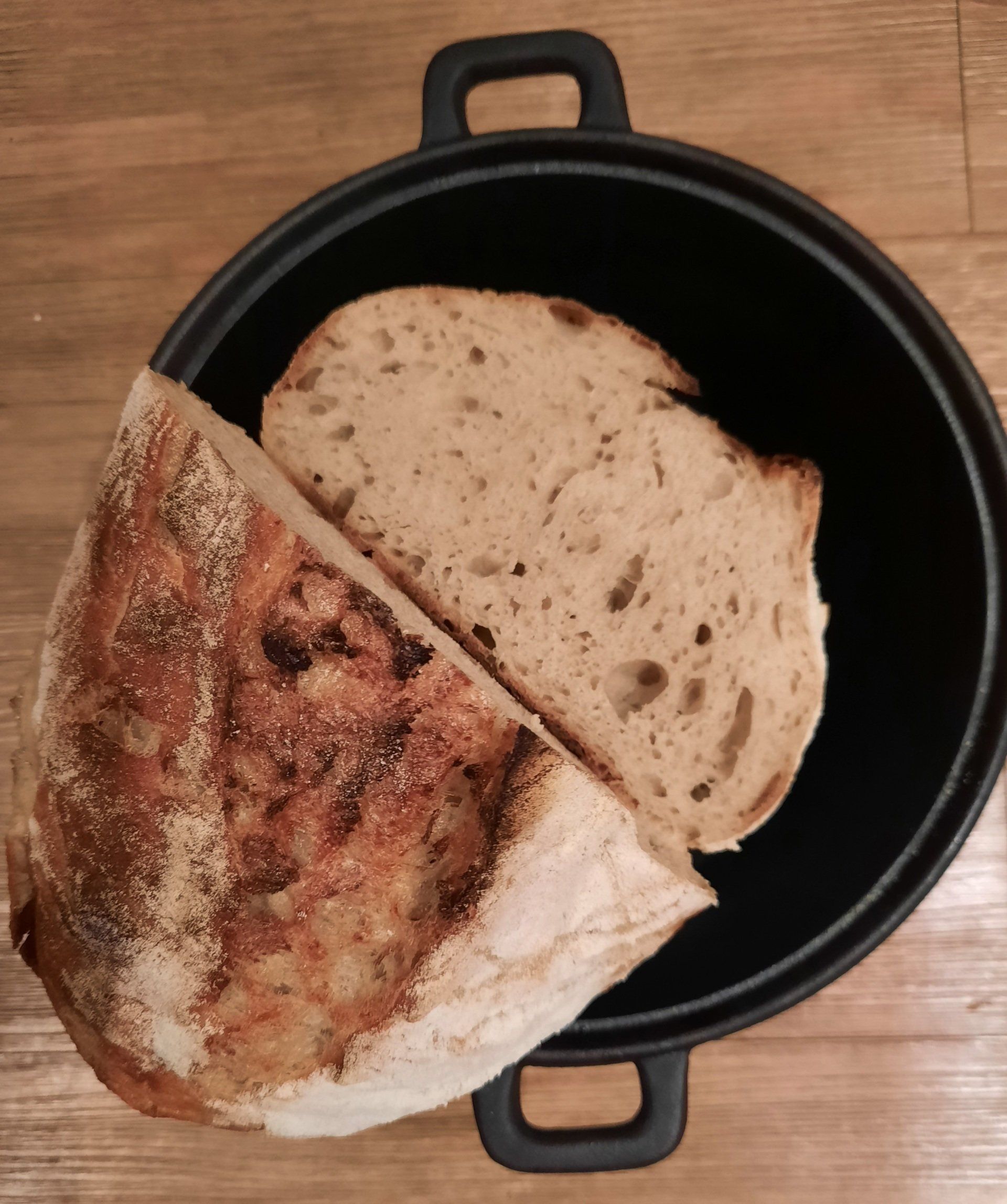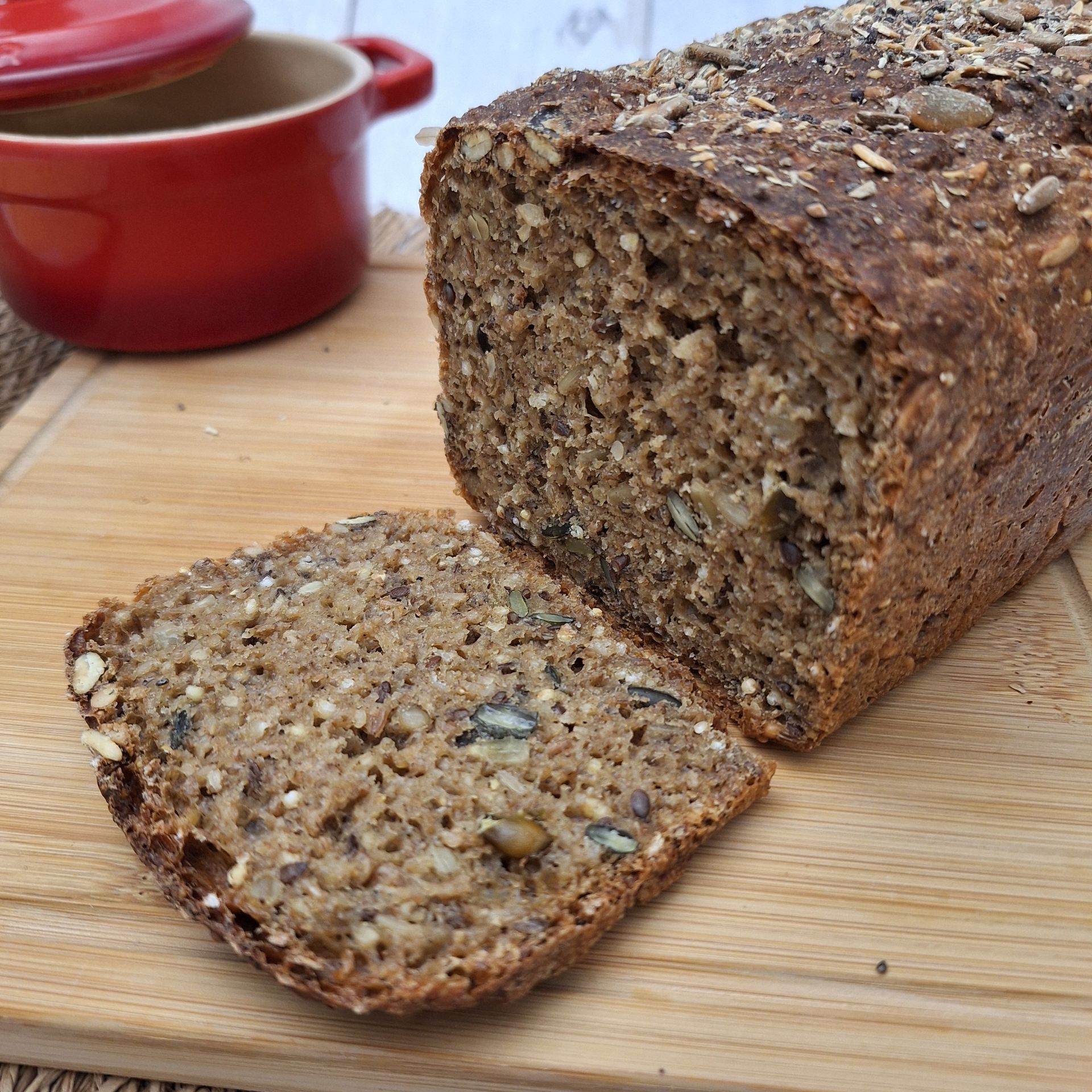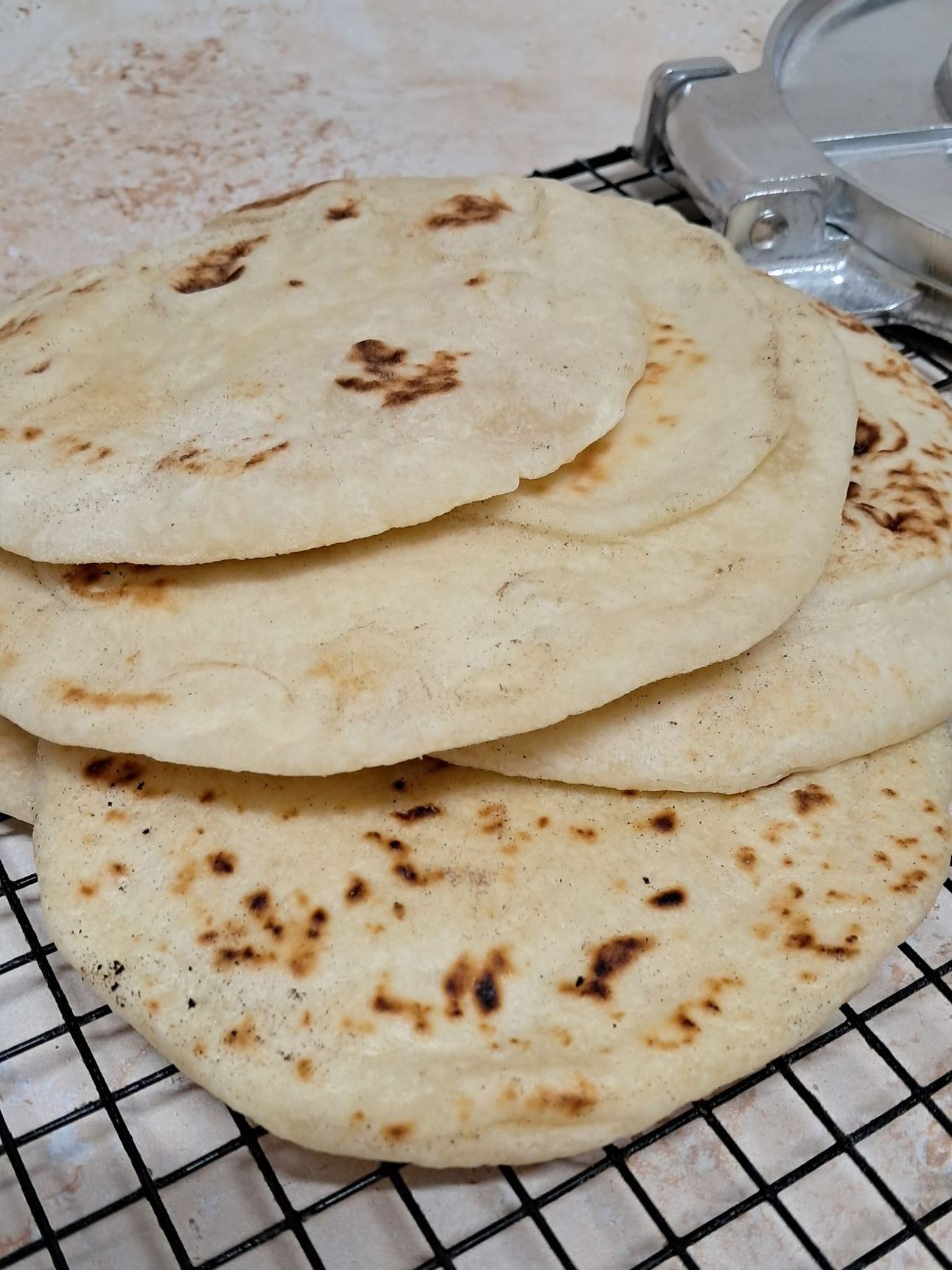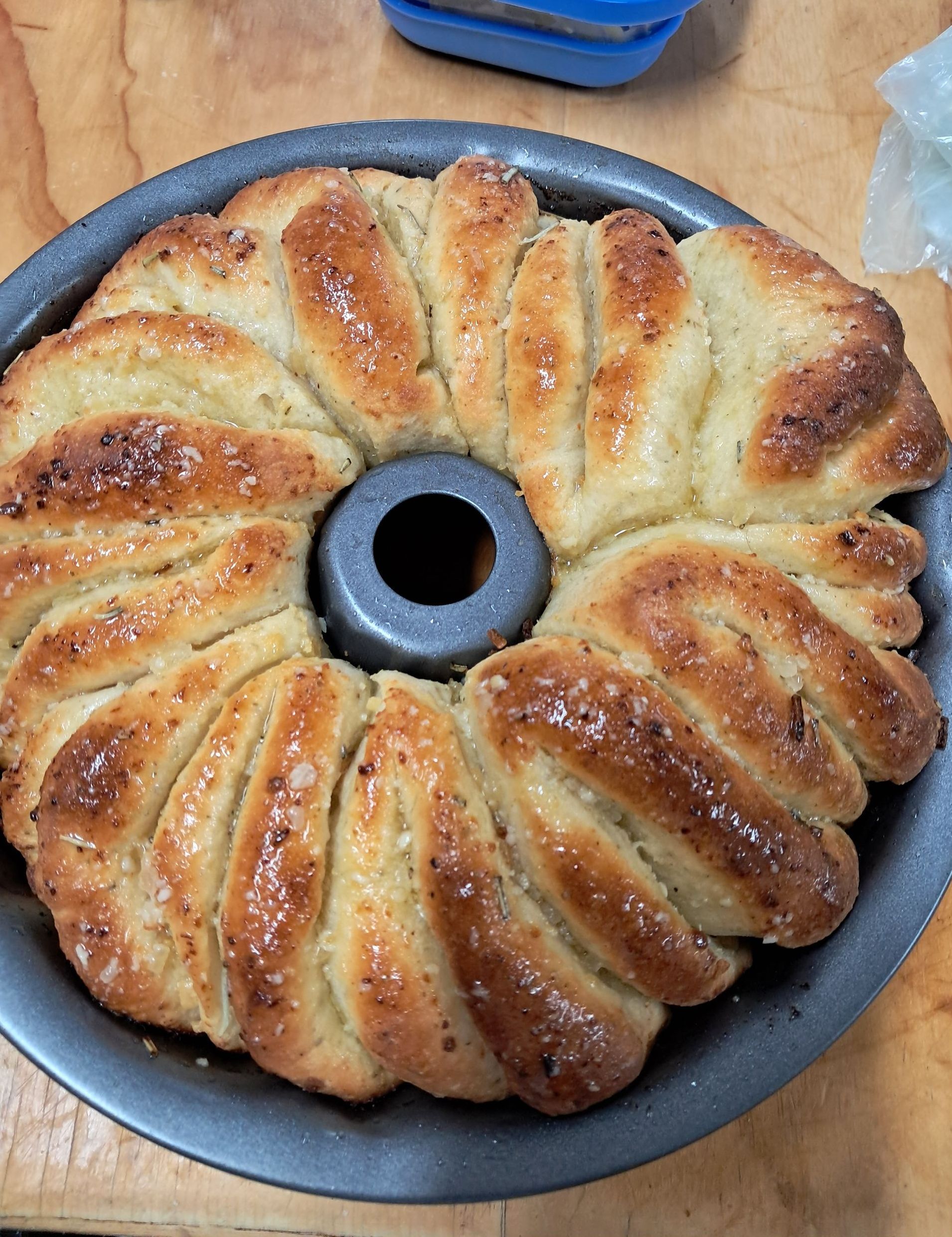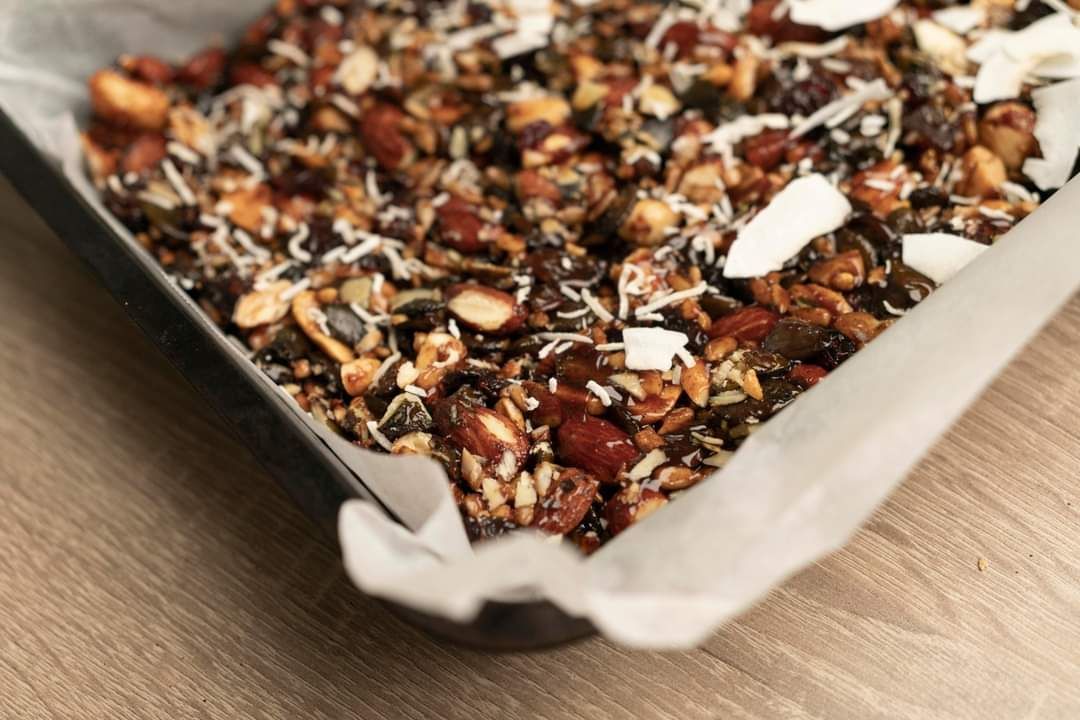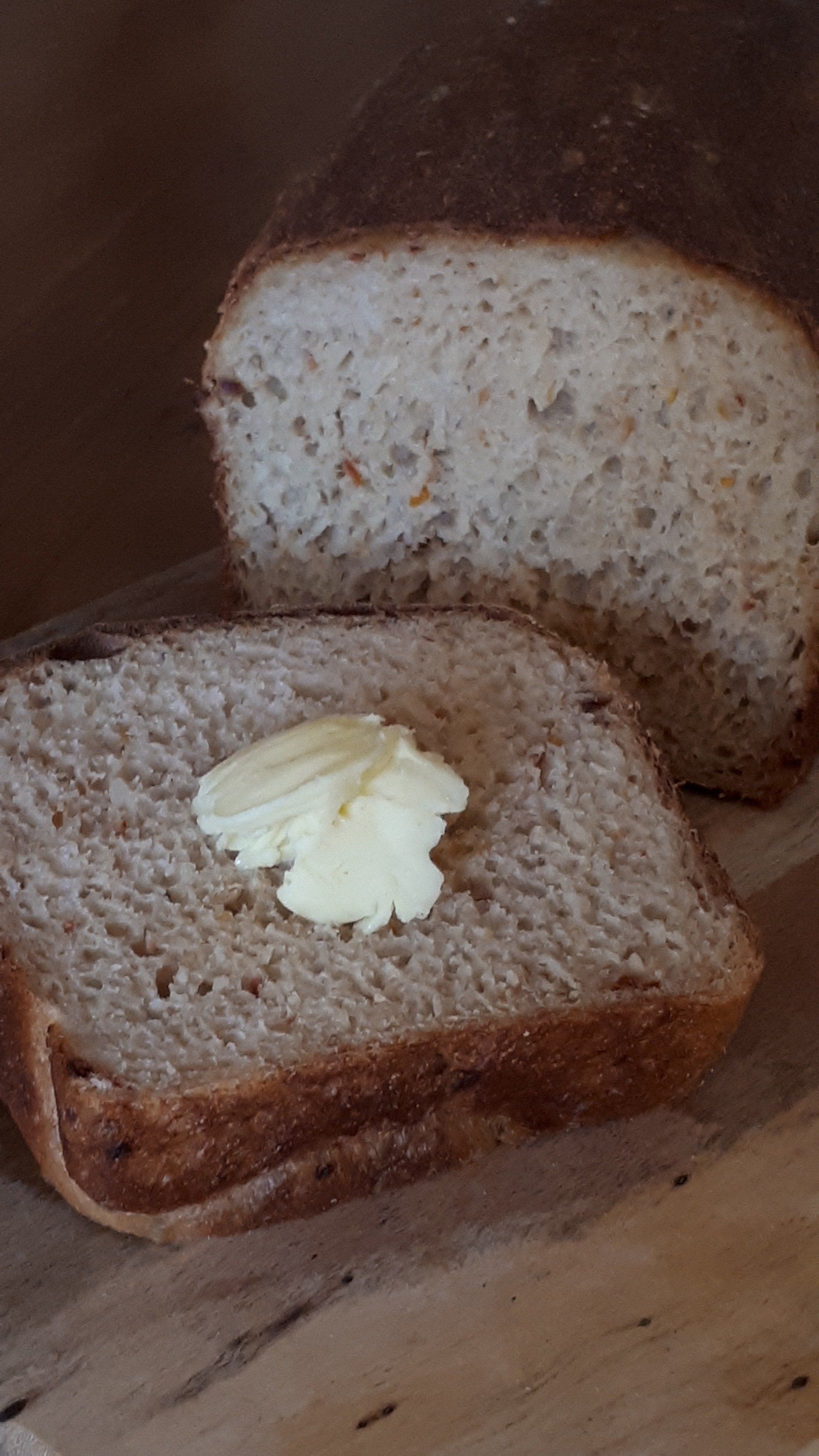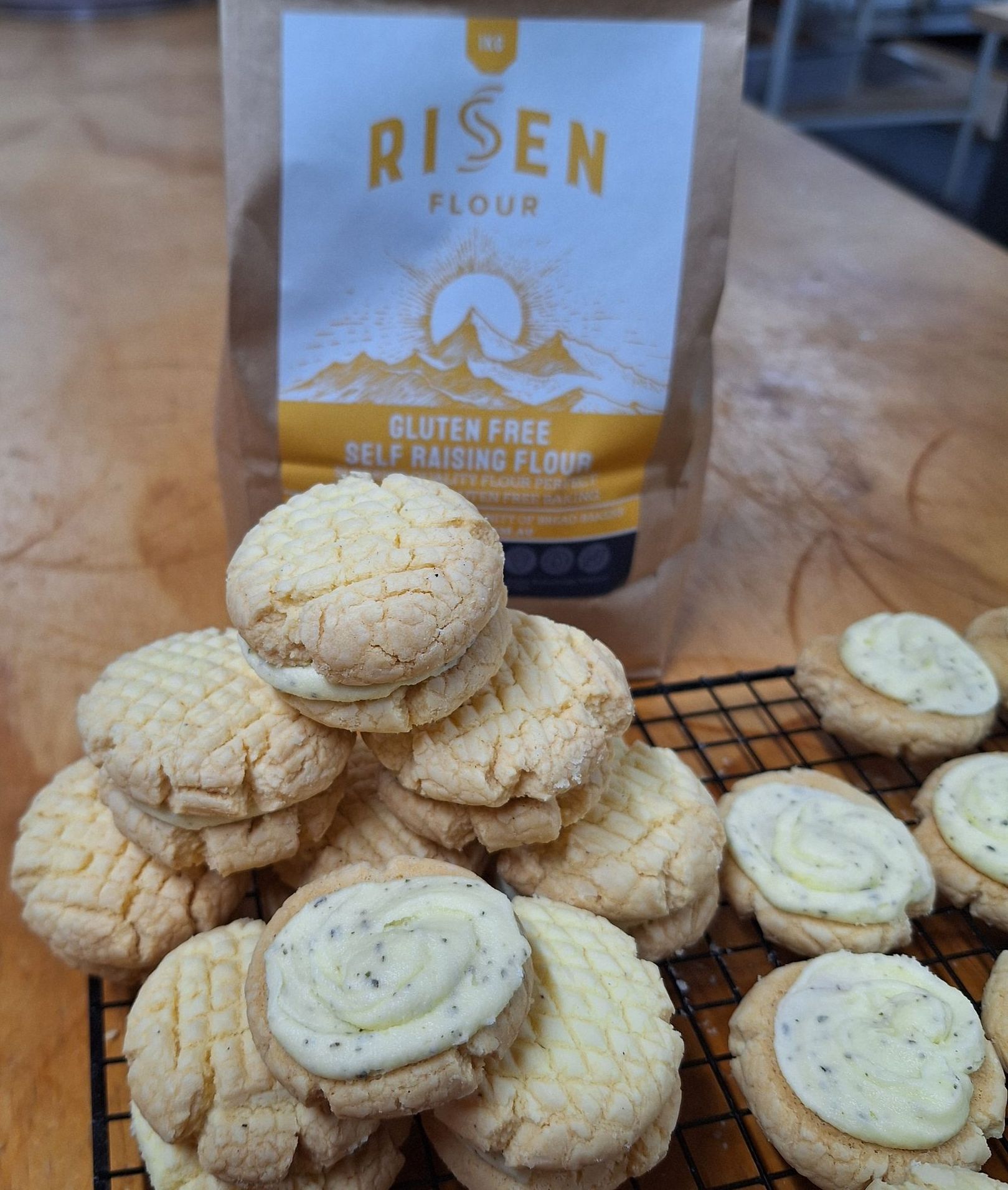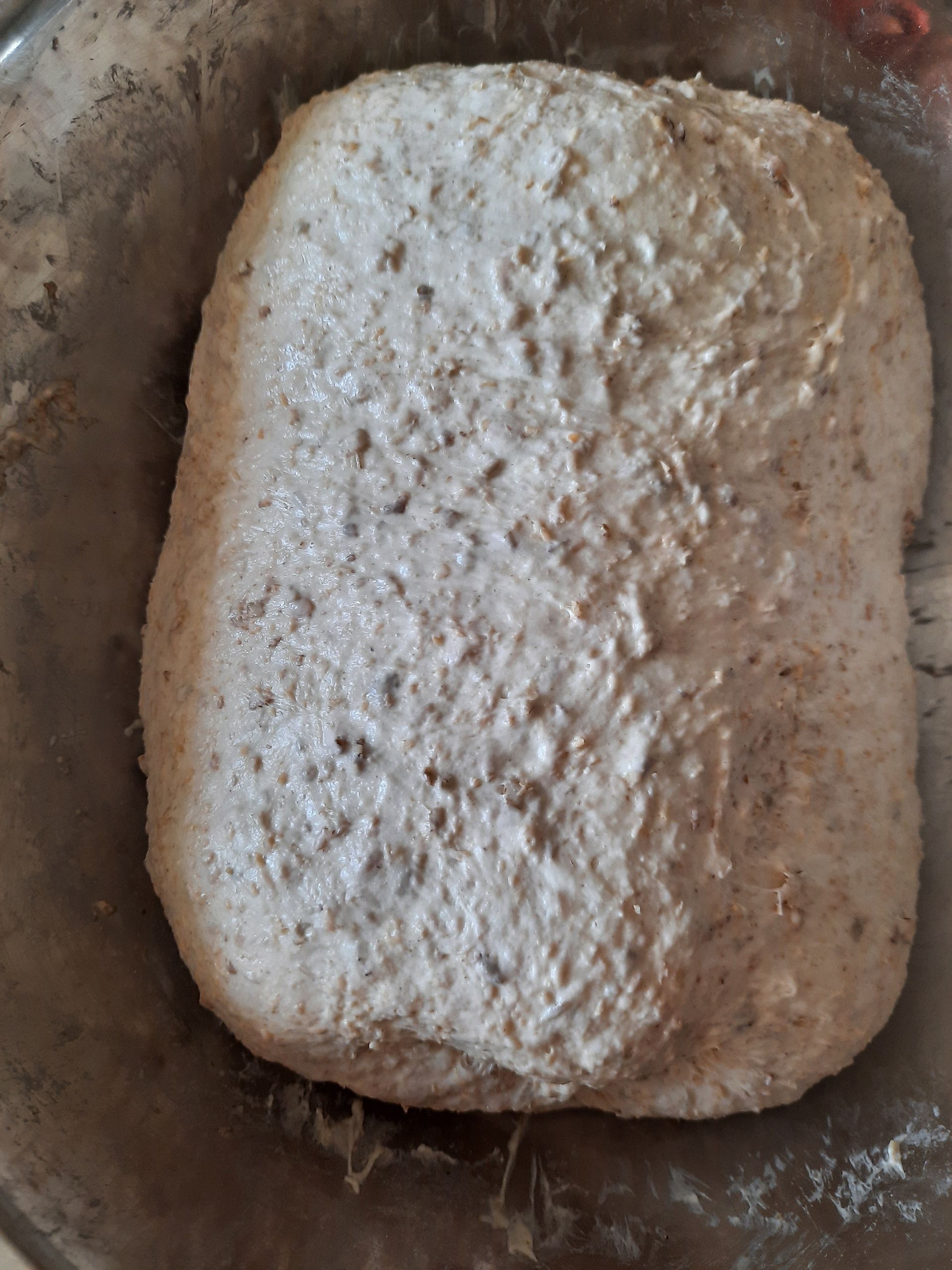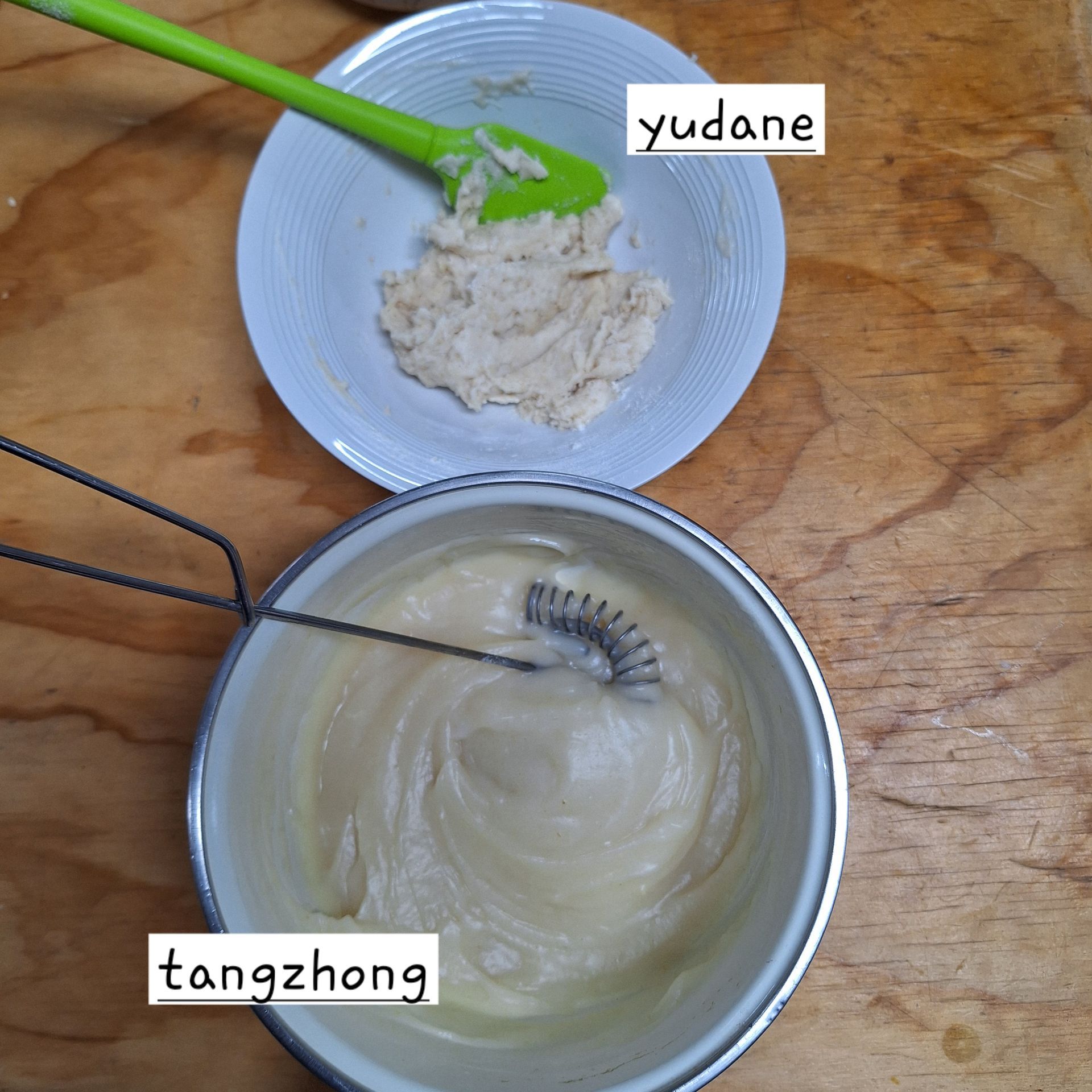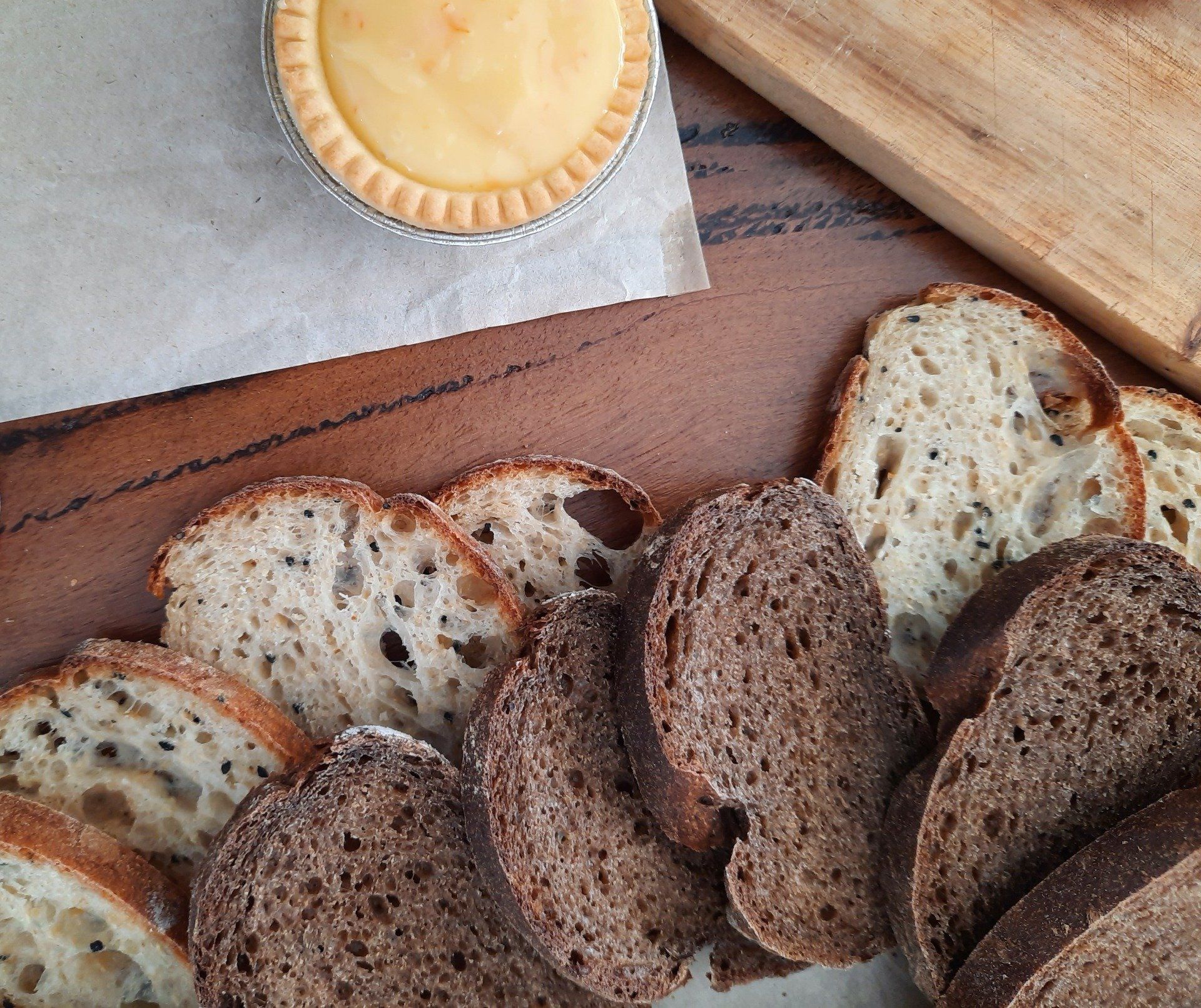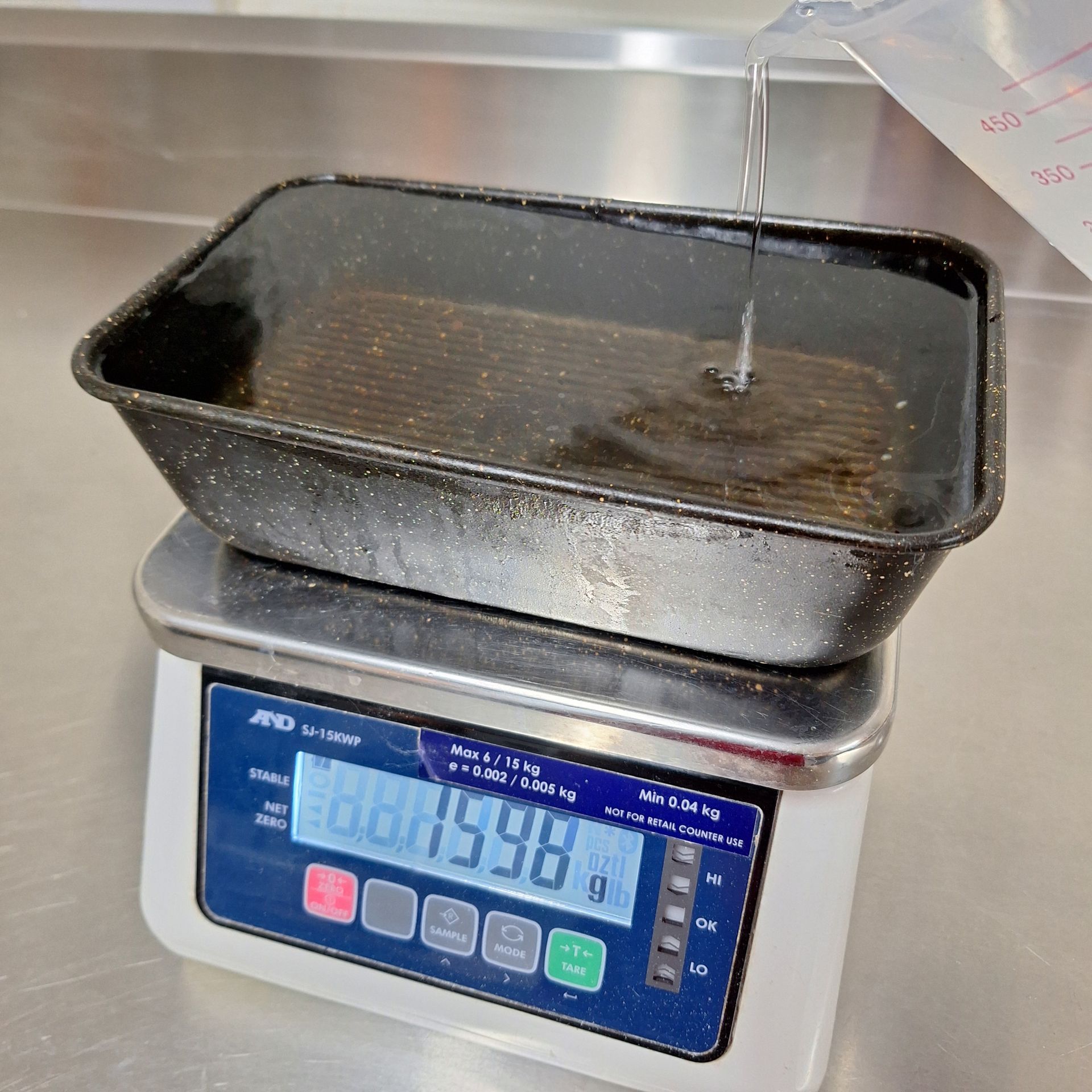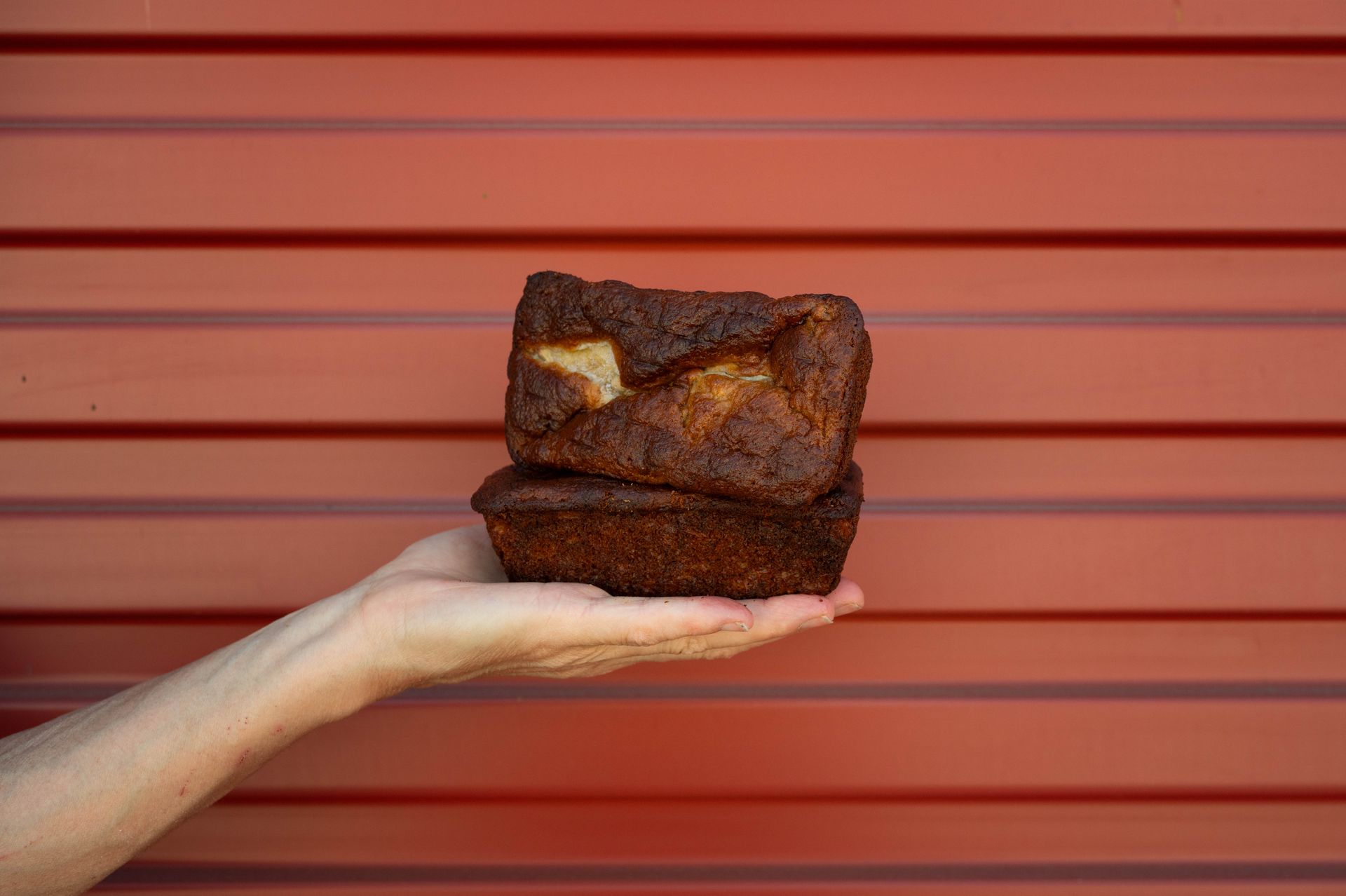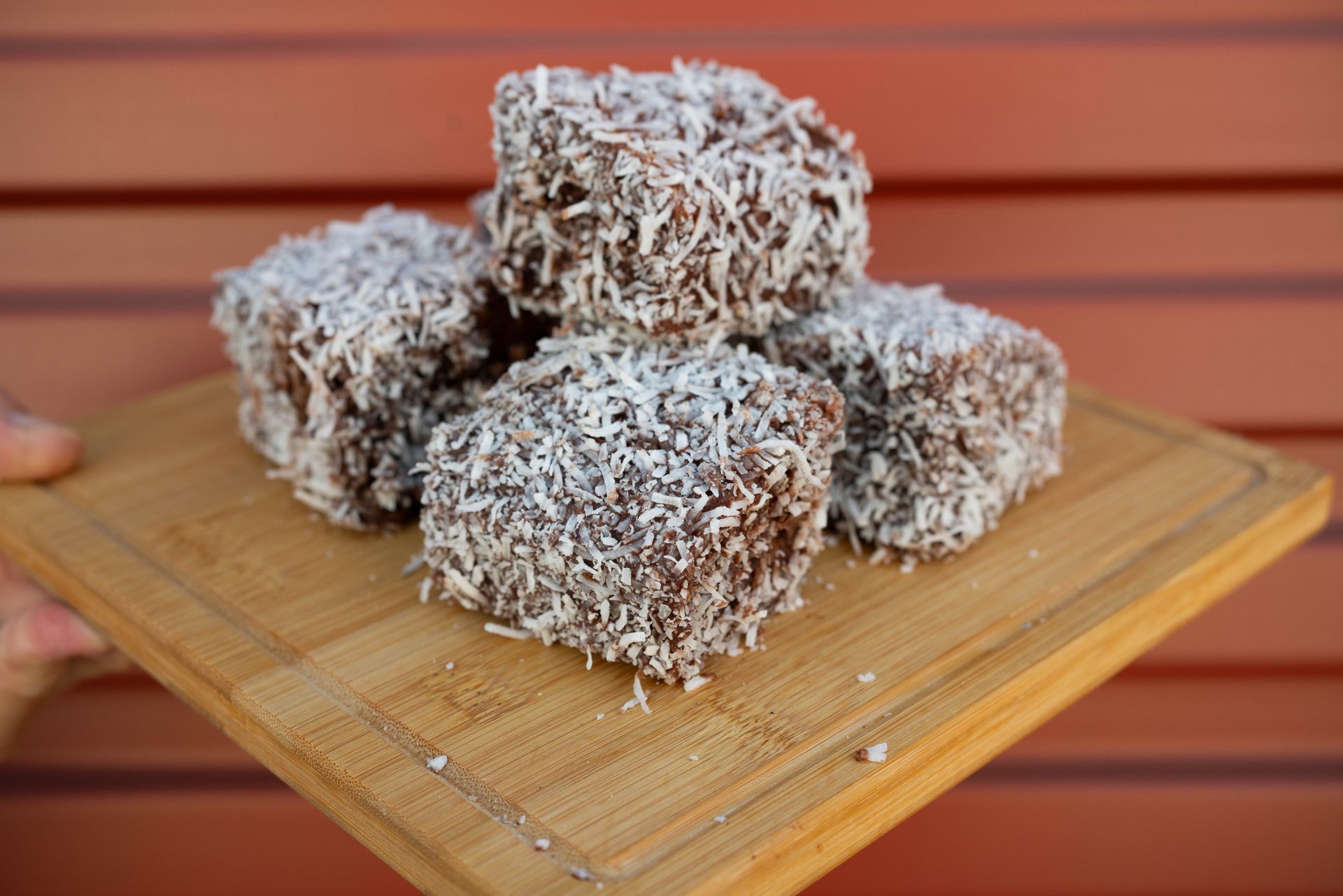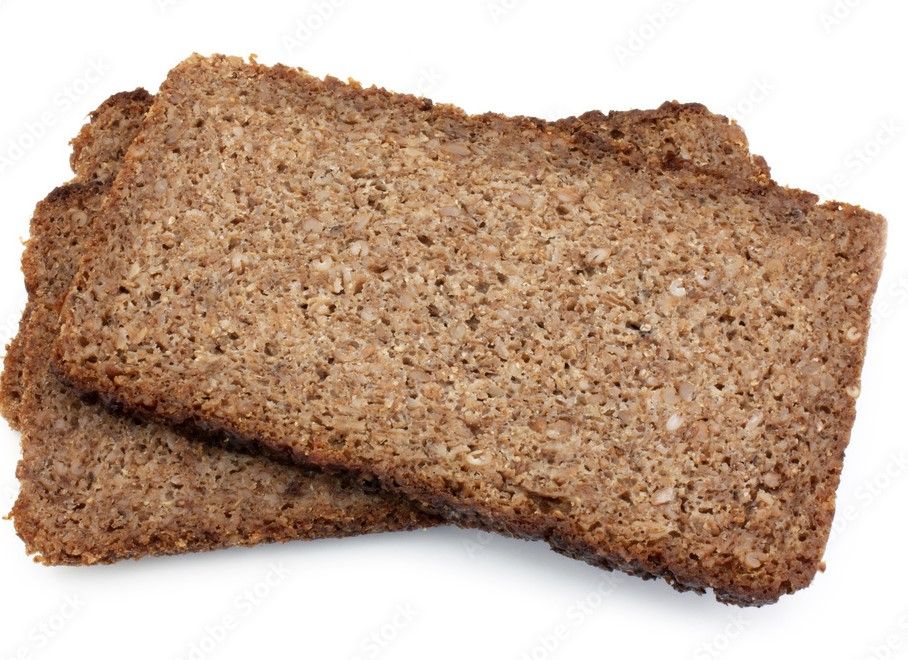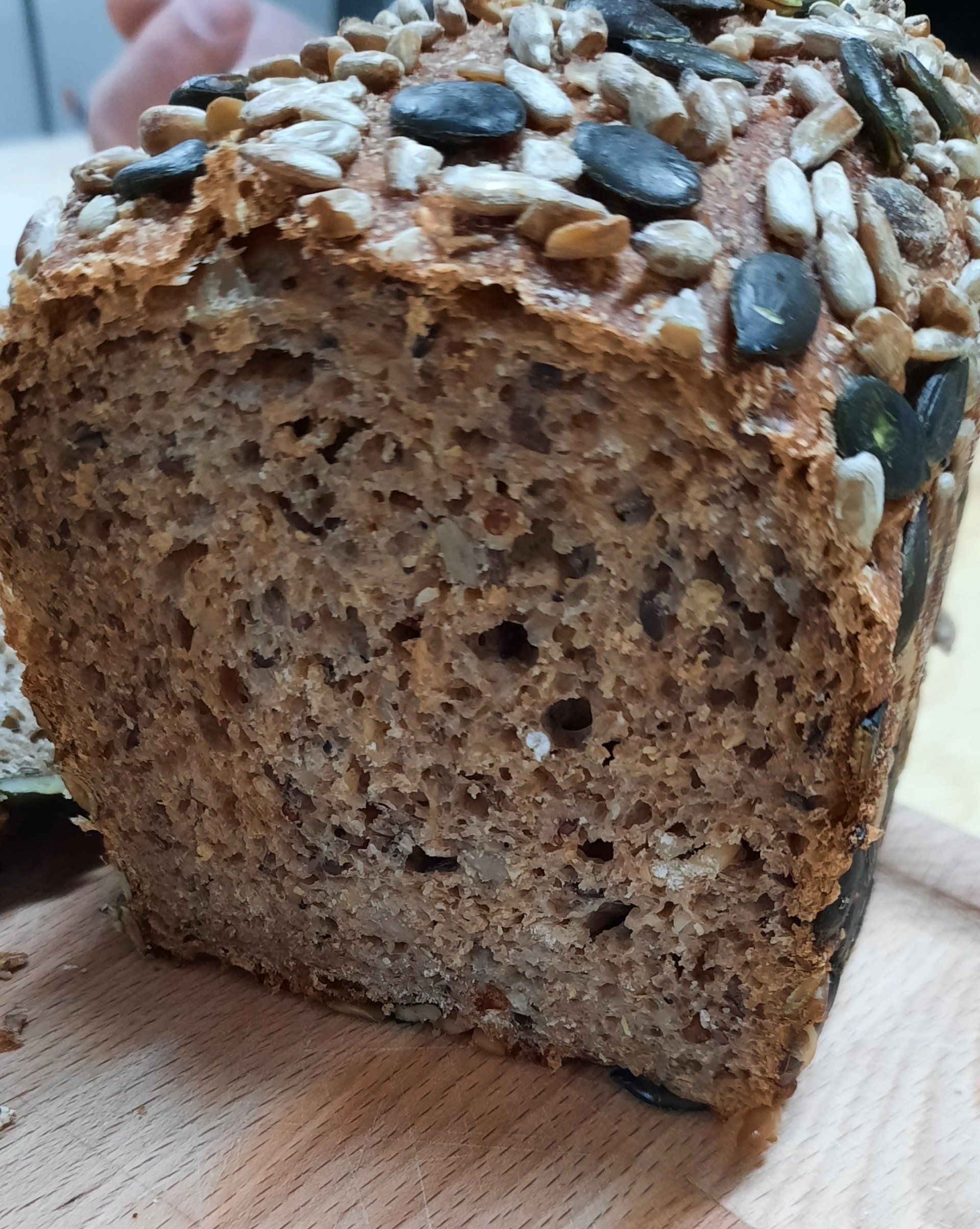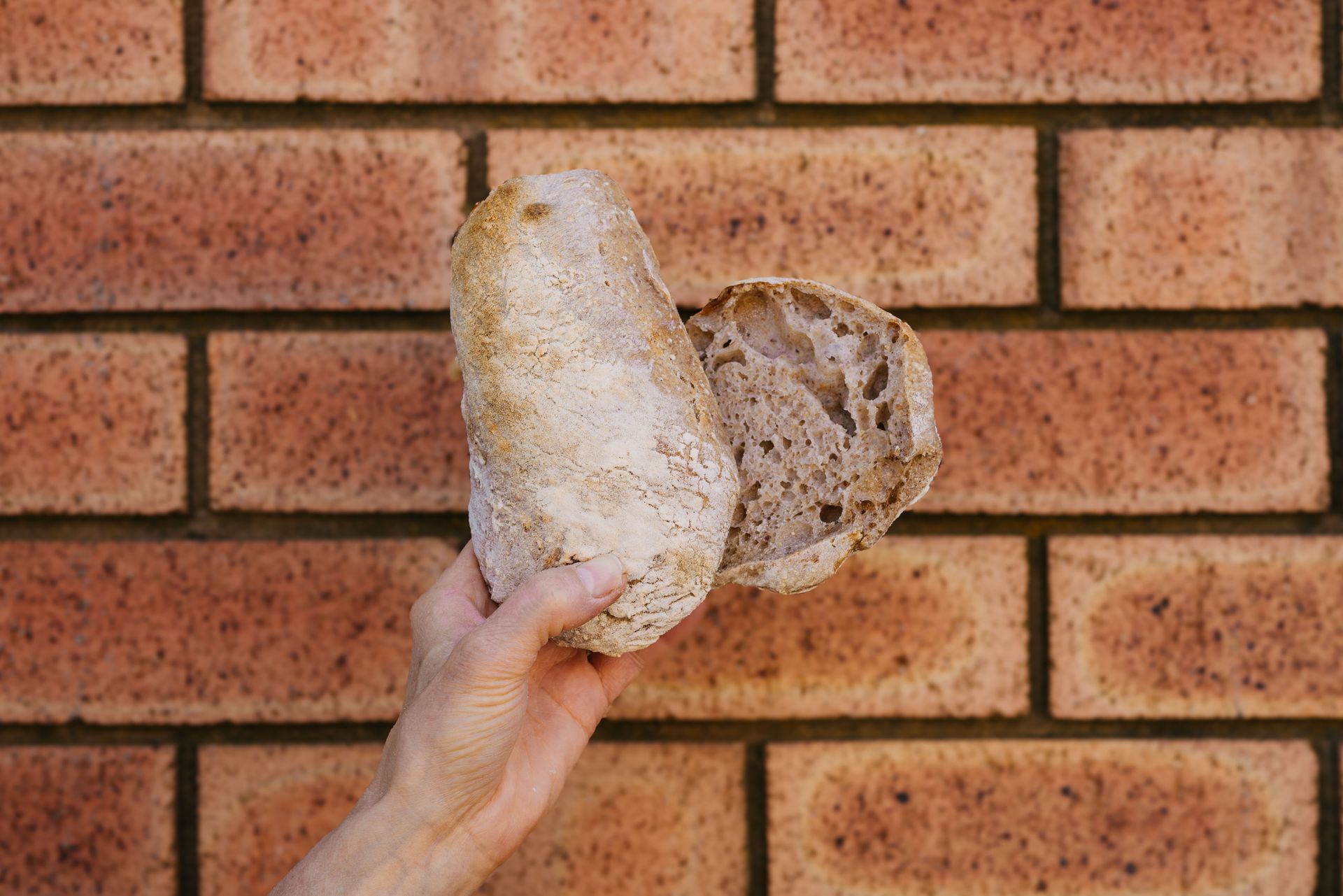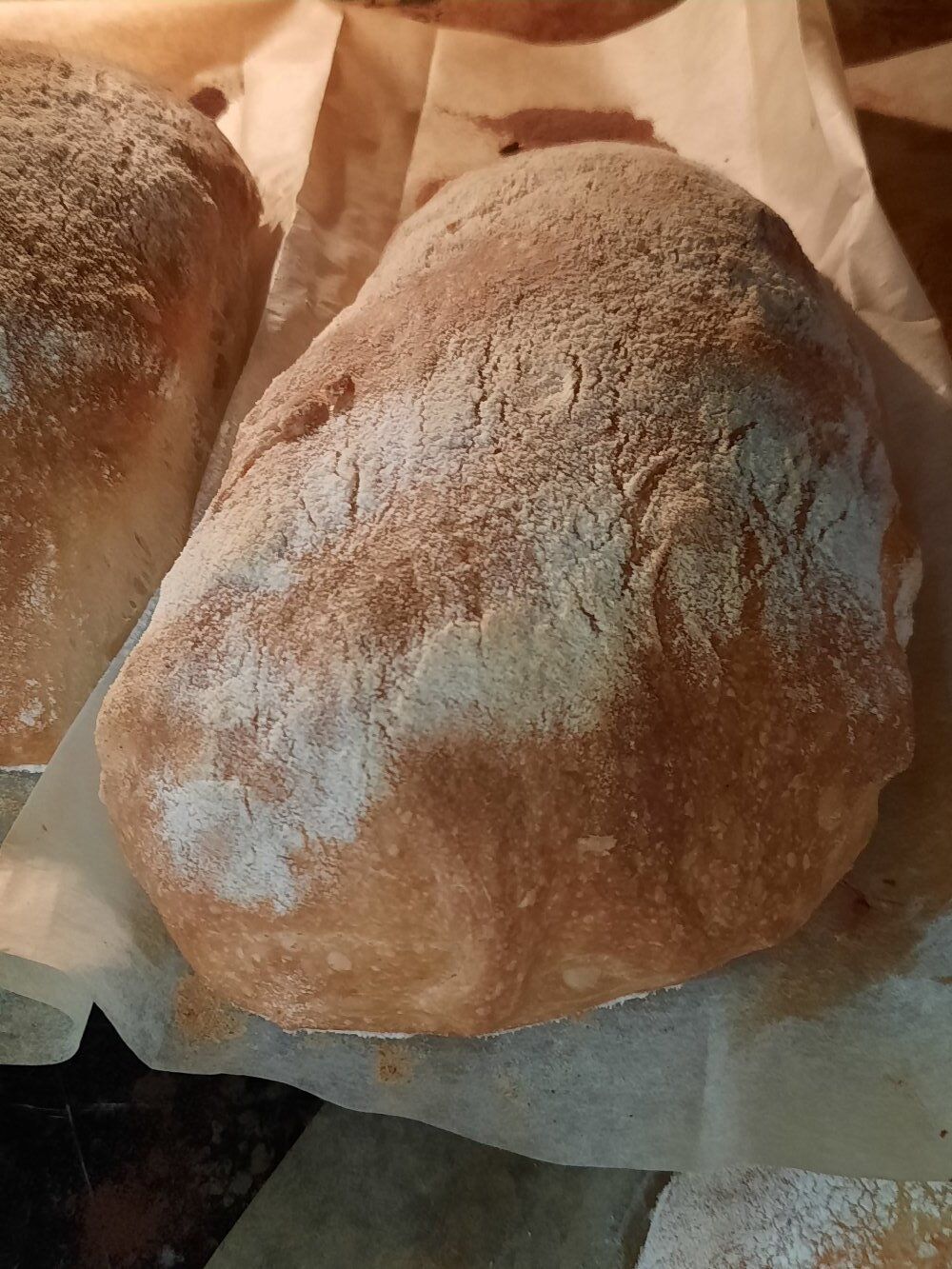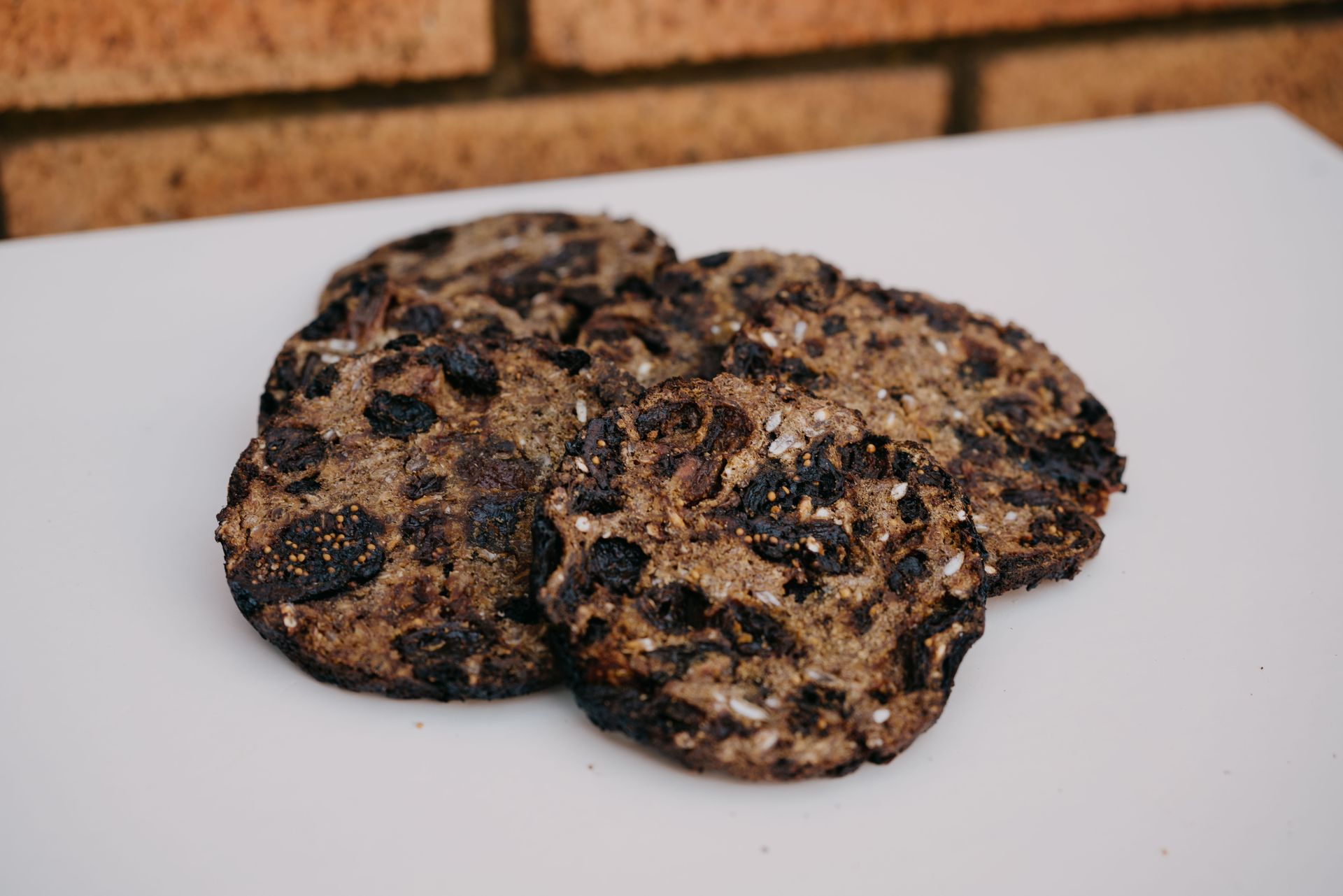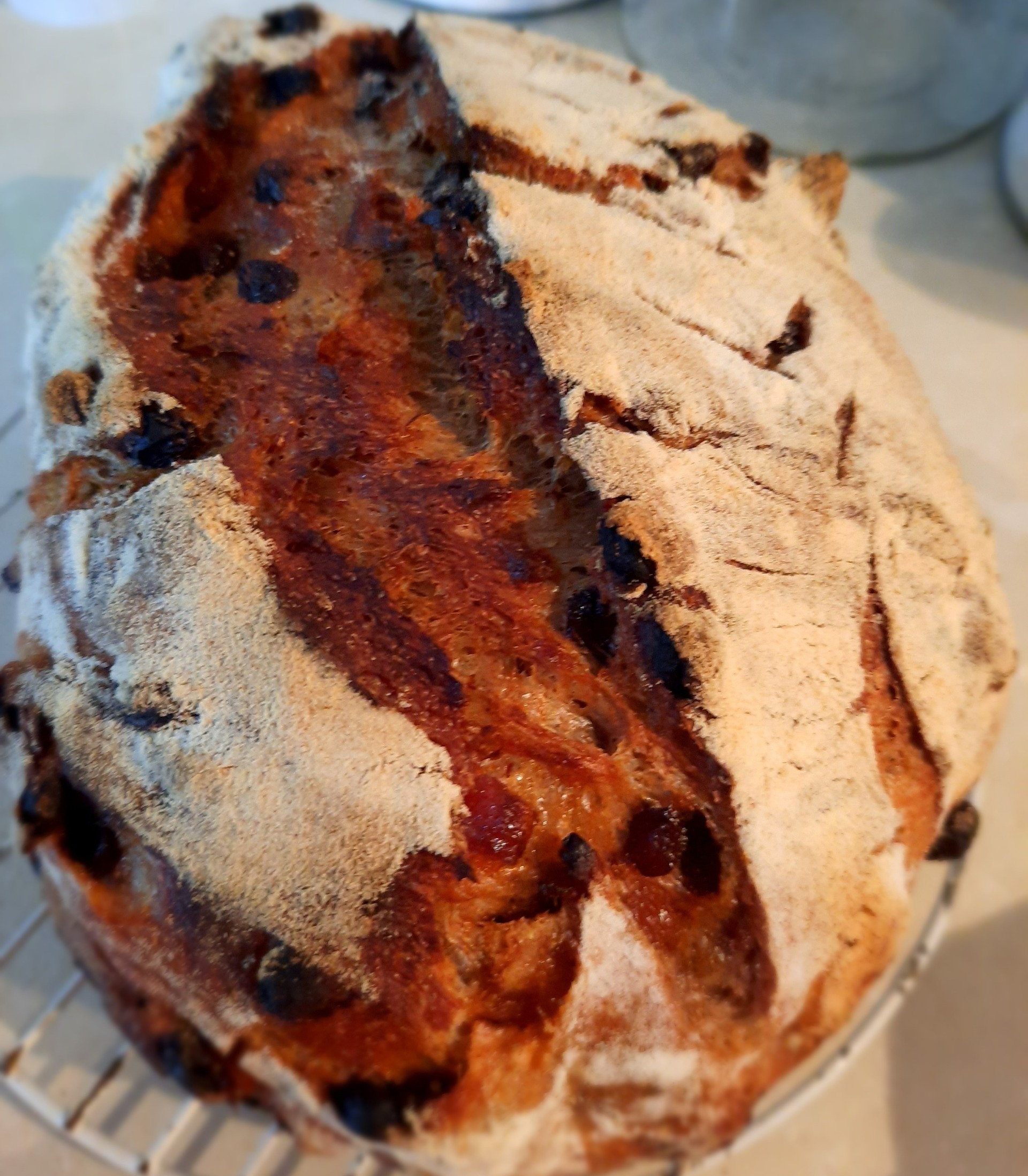Heritage Grains
A brief explanation on some of OUR HERITAGE grains
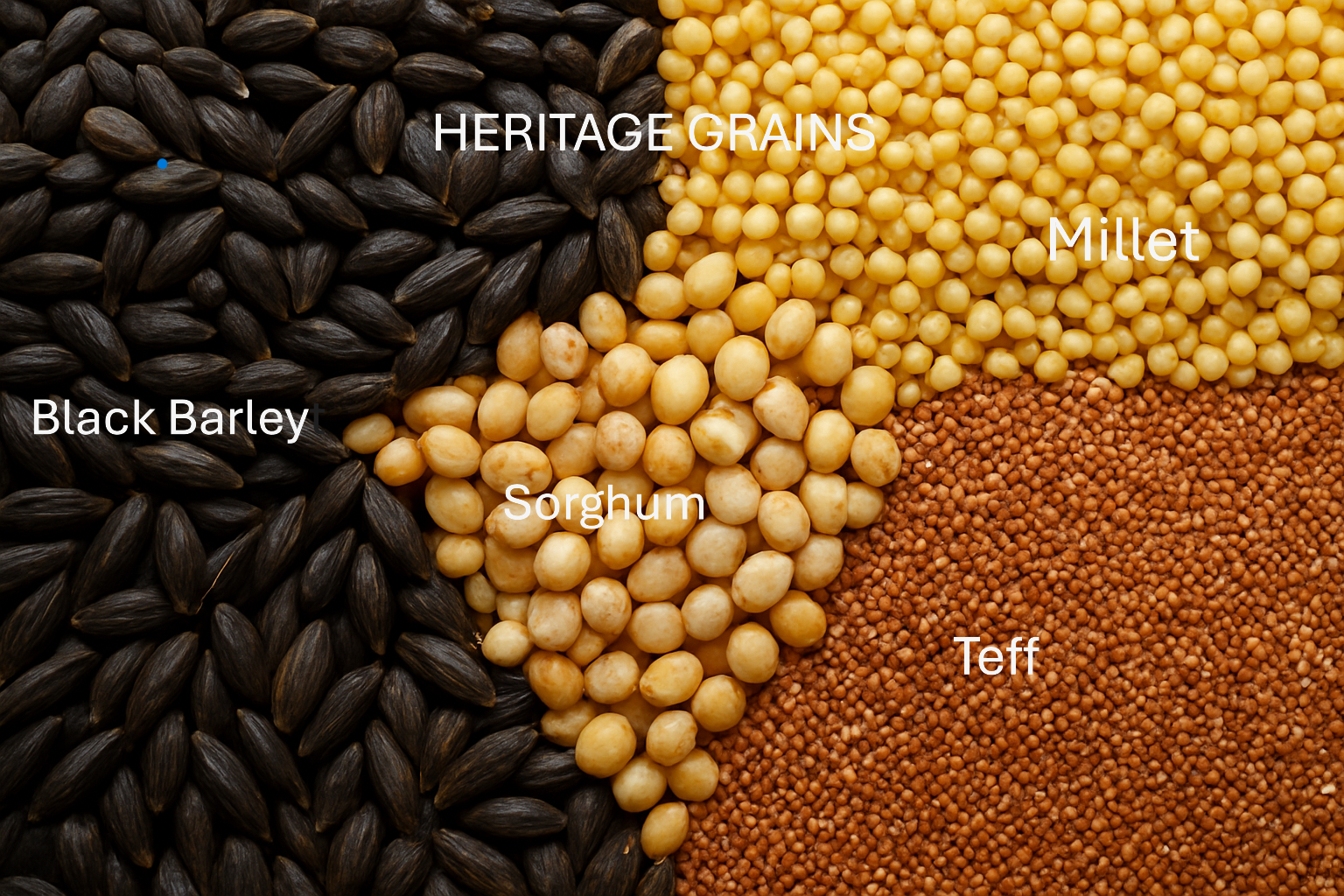
MILLET
A Short History of Millet
- One of the oldest cultivated grains: Archaeological evidence shows millet was domesticated in northern China around 8,000–10,000 years ago, making it older than rice and wheat.
- Staple across continents: It spread through Asia, Africa, and Europe, becoming a foundation grain for many cultures. In Africa and India, millet porridge, flatbreads, and beers have been staples for millennia.
- Resilient crop: Millet thrives in hot, dry, and poor-soil conditions where wheat or rice struggle, making it crucial in food security throughout history.
- Ancient recognition: Romans, Greeks, and medieval Europeans all consumed millet porridge and breads before wheat dominated.
- Modern revival: Today, millet is being rediscovered as an ancient grain — valued for its nutritional profile, gluten-free qualities, and sustainable farming benefits (low water needs, pest resistance).
Panorama Millet in Bread
Why add it?
Panorama millet brings gentle sweetness and a golden glow to bread, while boosting its nutritional value.
Health Benefits
- Rich in iron, magnesium, phosphorus & B vitamins for energy and wellbeing.
- High in antioxidants to support heart health.
- Provides fibre for good digestion and lasting fullness.
- Low GI, helping maintain steady blood sugar.
- Complements wheat protein for a more balanced nutrition profile.
A Grain with History
- One of the world’s oldest grains, cultivated for over 8,000 years.
- A staple food across China, Africa, and India, often enjoyed as porridges and breads.
- Valued for its ability to grow in dry, poor soils, making it a reliable and sustainable crop.
- Once common in Europe and now enjoying a modern comeback as a nutritious ancient grain.
In Every Loaf
Adding millet to bread brings not just rustic flavour and texture, but also a taste of history and nourishment in every slice.
Is Millet a grain?
Yes — millet is a grain.
More precisely, it’s the seed of certain grasses in the Poaceae (grass) family, just like wheat, barley, rice, and corn. Botanically speaking, millet is considered a cereal grain.
A few key points:
- “Millet” is actually a group name for several small-seeded ancient grains, including proso, foxtail, pearl, finger, and little millet.
- They are classed as true grains/cereals, not pseudograins (like buckwheat or quinoa).
- Naturally gluten-free, making them useful in gluten-free baking and blending with wheat flours.
BLACK BUCKWHEAT
A Short History of Black Buckwheat
Black buckwheat has been cultivated for thousands of years, with origins traced back to the highlands of Asia, particularly around the Himalayas and Siberia. It spread along ancient trade routes into Europe and was a staple food in Eastern Europe and Russia, where it became the base for hearty porridges, pancakes, and breads. Unlike modern wheat, buckwheat is a hardy crop that thrives in poor soils and cooler climates, making it a reliable food source through history. Today, black buckwheat is valued not only for its resilience and heritage but also for its nutritional richness and distinctive flavour, bringing tradition and health together in every loaf.
Black Buckwheat – Wholesome Nutrition for Better Bread Why Add it?
Black buckwheat is a powerhouse pseudograin, naturally gluten-free and rich in nutrients that support overall wellbeing. Packed with plant-based protein, dietary fibre, and essential minerals like magnesium, manganese, and copper, it helps sustain energy and aids digestion. It is also a valuable source of rutin, a unique antioxidant known to support healthy circulation and reduce inflammation.
When used in bread, black buckwheat brings both nourishment and character. Its earthy, nutty flavour adds depth, while its dark colour lends a rustic, artisanal appearance to loaves. Buckwheat’s fibre and phytonutrients make bread more satiating and supportive of balanced blood sugar levels, while its distinct taste pairs beautifully with whole grains, seeds, and sourdough styles.
Incorporating black buckwheat into bread not only elevates nutritional value but also creates loaves that are hearty, flavourful, and full of natural goodness.
Core Functional Nutrients of Black Buckwheat
- Protein – High-quality plant protein with all essential amino acids, supporting muscle health and satiety.
- Dietary Fibre – Promotes healthy digestion, helps regulate blood sugar, and supports cardiovascular health.
- Rutin – A unique antioxidant flavonoid that strengthens blood vessels, supports circulation, and reduces inflammation.
- Magnesium – Essential for energy production, muscle function, and bone health.
- Manganese – Supports metabolism, antioxidant defense, and bone formation.
- Copper – Important for iron metabolism, antioxidant protection, and connective tissue health.
- Other Antioxidants – Including quercetin and phenolic compounds, which combat oxidative stress.
Is Black Buckwheat a grain?
No - Black buckwheat is not a true grain – it’s a pseudograin.
That means while it’s used much like cereal grains (wheat, rye, barley) in breads, porridges, and noodles, it actually comes from the seed of a flowering plant in the Polygonaceae family (related to rhubarb and sorrel). Unlike true grains, it’s naturally gluten-free.
BLACK BARLEY
A Short Histroy of Black Barley
Black barley is an ancient cereal grain that has been cultivated for thousands of years, with origins in the Fertile Crescent, the birthplace of agriculture. Traditionally used in Europe, the Middle East, and Asia, it was prized for its hardiness, nutritional value, and versatility in breads, porridges, and soups. Unlike modern barley varieties, black barley retains its dark hull and rich nutrients, including protein, fibre, and antioxidants, making it both a historic staple and a modern superfood.
Black Barley in Bread - what are the benefits
Adding black barley to bread boosts both nutrition and flavour. This ancient grain is naturally high in protein and dietary fibre, helping to keep you fuller for longer and support healthy digestion. It’s also rich in antioxidants and essential minerals like B vitamins, phosphorus, and magnesium, contributing to overall wellbeing.
In baking, black barley brings a subtle nutty taste, a hearty texture, and a darker, rustic colour, giving bread a distinctive, artisanal look. Combined with whole grains and seeds, it creates loaves that are wholesome, satisfying, and naturally nutritious.
Core Functional Nutrients
- β-glucans (soluble fibre):
– Proven to lower LDL-cholesterol at intakes ≥3 g/day.
– Reduce post-meal glycaemic rise, supporting low GI breads.
– Well-established, EFSA and FDA-approved claims. - Anthocyanins (black pigment):
– Potent antioxidants with anti-inflammatory activity.
– Concentrated in black barley bran; preserved in wholegrain flours. - Minerals:
– Iron, magnesium, selenium, zinc.
– Sourdough fermentation improves absorption by reducing phytic acid.
Fibre & satiety:
– High fibre makes breads
more filling and slows digestion
OATS
A Short History of Oats
Oats have been cultivated for thousands of years, originally in the Fertile Crescent and later spreading to Europe, where they became a staple in cooler, wetter climates. Historically, oats were valued for their hardiness, ability to grow in poor soils, and versatility in porridge, bread, and livestock feed. Today, oats are celebrated worldwide as a nutritious whole grain, prized for their fibre, protein, and heart-healthy benefits.
Oats and oat flour in breads
Oats and oat flour bring both nutritional and functional benefits to bread, baking, and general cooking.
Oats bring natural nourishment and softness to every slice. Rich in heart-healthy beta-glucan fibre, they help support steady energy, balanced digestion, and cholesterol health. Their gentle nutty flavour and tender texture make bread not only more wholesome, but also deliciously satisfying.
Nutritional Benefits
- High in Fibre(especially beta-glucan):
- Supports healthy digestion.
- Helps regulate blood sugar by slowing carbohydrate absorption.
- Lowers cholesterol, especially LDL (“bad” cholesterol).
- Sustained Energy (Low GI):
- Provides slow-release carbohydrates, reducing energy crashes.
- Rich in Protein:
- Higher protein content than most other grains, supporting satiety and repair.
- Micronutrient Dense:
- Good source of B vitamins (especially B1, B5), magnesium, iron, zinc, and phosphorus.
- Gluten-Free (naturally):
- Safe for most people with gluten intolerance or sensitivity, though cross-contamination can occur unless certified gluten-free. (which we cannot claim in Australia, although we can say Gluten Tested)
Functional / Baking Benefits
- Moisture Retention:
- Oats absorb and hold water, keeping bread and baked goods softer for longer.
- Improved Texture:
- Rolled oats add chewiness and rustic character to bread.
- Oat flour gives tenderness to cakes, muffins, and flatbreads.
- Neutral, Nutty Flavor:
- Blends well with other flours without overpowering them.
- Boosts Dough Tolerance:
- Oat beta-glucans act like gums, helping dough hold together (though oats have no gluten).
- Versatility:
- Works in breads, pancakes, cookies, porridges, smoothies, coatings, and thickening soups.
-
In bread baking: Adding 10–20% oat flour or flakes enriches nutrition, adds softness, and creates a heartier, more wholesome loaf.
In gluten-free baking: Oat flour provides structure and moisture, especially when combined with starches or gums.
Oats for Every Occasion: The Very Versatile Grain
If you grew up with Goldilocks and thought that porridge was the only way to eat oats, you’ll
be pleased to know that there are numerous ways to consume this ancient grain. Available
in a variety of forms including oat groats, steel cut, oat flakes and oat flour, this versatile
grain boasts a range of health benefits and baking possibilities. Beyond the breakfast bowl,
this whole grain can be used for smoothies, snack bars, milk, biscuits or bread… So it’s a
wise move to see how you can include this powerful player in your everyday menu.
Unlike when you’re six and think everyone over 50 is ancient, oats earn the right to be called
ancient, having been cultivated across the world for over 2000 years and recognised as one
of the oldest crops known to human civilization. Due to an increased interest in healthy
eating, these ancient grains are now getting some attention for some of the benefits they
bring to the table.
Benefits of Oats
According to many academic journals and reviews, (but without going into words we can’t
pronounce or symbols too hard to find on a keyboard) oats carry with them a range of health
benefits. They are known to be high in fibre, rich in protein, contain micronutrients and can
provide sustained energy. While there are many conversations online suggesting the
possible health benefits of oats in relation to type II diabetes, digestive health and
antioxidants, some research has cited that there is accumulating evidence to suggest that
oat consumption may reduce the risk of cardiovascular disease due to the beta – glucan
soluble fibre contained.
Another advantage of having oats always available is that they are very versatile and can be
used to create various meals or snacks from cookies, smoothies, granola bars, pie crusts
through to milk or oat loaves. (click link for an Oat Bread Recipe) So if you keep a stash of
oats on hand, not only will you always have a breakfast option, but you’ll be able to whip up
other tasty menu items.
Not only is this grain great for use in many recipes - it also adds a nice texture to your
baking, can contribute to moisture retention or used as a topping on your baked goods.
Some forms are known to boast a nutty flavour, (depending what type you are using), but
whatever version of oat you choose, there are several ways to turn them into something
tasty to consume.
Seasonal ways to utilize oats
The adaptably of oats in the kitchen, make them a valuable year-round ingredient for
porridge, bread, smoothies, baked goods and overnight oats. Below are some ideas on how
to use oats in every season:
Summer: smoothies, no bake oat bars, oat milk, oat crusted grilled items (eg veggies/fish)
Autumn: Oat Based Granola, Oat Muffins/Biscuits, Baked Oat Crumbles, Oat Milk Blends
Winter: Porridge, Oat Flour Banana Breads, Baked Oatmeal (oven roasted with spices &
fruit)
Spring: Overnight Oats, Oat Flour Muffins with Spring Fruits
Interestingly, while oats are often associated with the sweeter recipes, oat groats have been
known to be substituted for rice or quinoa in savoury meals or oat-based soups thickened
with oat flours. Due to soluble fibres, oats have an emulsifying, thickening qualities and can
act as binders or fillers in recipes (eg veggie patties/meatballs).
For a single ingredient, the versatility of oats makes it an excellent option to have on hand.
As a much healthier choice, the benefits of getting creative with this grain are numerous.
Providing sustenance for every season, this powerhouse grain is an amazing kitchen staple.
Health Benefits
- Heart health: Oats are rich in beta-glucan, a soluble fibre proven to lower LDL (“bad”) cholesterol.
- Blood sugar balance: Slow-digesting carbohydrates support stable energy release and help manage blood sugar.
- Digestive wellness: High fibre supports healthy digestion and gut function.
- Nutrient boost: Oats add protein, iron, magnesium, B vitamins, and antioxidants.
- Naturally gluten-free (if certified): A safe and wholesome choice for many with gluten sensitivities (though oats don’t replace gluten’s structure).
TEFF
A Short History of Teff
Teff is an ancient grain native to Ethiopia, where it has been cultivated for over 5,000 years. It is the main ingredient in injera, the traditional Ethiopian flatbread, and has been a staple food in East Africa for millennia. Teff is prized for its tiny seeds, high nutrient content, and adaptability to a range of climates, making it both a historic and resilient grain. Today, teff is gaining global recognition for its rich protein, fibre, and mineral content, as well as its natural gluten-free status.
What are the benefits of adding Teff to your bread?
Teff is a tiny but mighty grain, naturally gluten-free and packed with nutrition. It’s rich in protein, dietary fibre, calcium, iron, and resistant starch, which supports digestion and steady energy release. In bread, teff adds a subtly nutty flavour, moist texture, and wholesome density, making loaves more satisfying and nutritious.
Adding teff to your bread not only enhances taste and texture but also boosts its health profile, creating a hearty, nutrient-rich loaf that’s good for both body and palate.
Key Minerals in Teff
- Calcium – Supports strong bones and teeth.
- Iron – Essential for healthy red blood cells and energy levels.
- Magnesium – Helps with muscle function, nerve signaling, and energy production.
- Phosphorus – Important for bone health and cellular function.
- Manganese – Supports metabolism and antioxidant defense.
- Zinc – Helps immune function and wound healing.
Key Vitamins in Teff
- Vitamin B1 (Thiamine) – Supports energy metabolism and nervous system health.
- Vitamin B2 (Riboflavin) – Important for energy production and skin health.
- Vitamin B3 (Niacin) – Helps convert food into energy and supports digestive health.
- Vitamin B6 – Supports brain function and red blood cell production.
- Folate (B9) – Vital for cell growth and DNA synthesis.
References:
- Teff Nutrition - A Tiny Grain Packed with Nutrients. TeffCo. The Teff Company
- Teff nutrition: calories, carbs, GI, protein, fiber, fats. Food Struct. Food Struct
- Nutrition facts for teff, recommended daily values and analysis. Nutrient Optimiser. NutrientOptimiser
- Teff: Complete Nutrition Data. Food Fact. foodfact.info
- Teff: Complete Mineral Profile. Food Fact.

